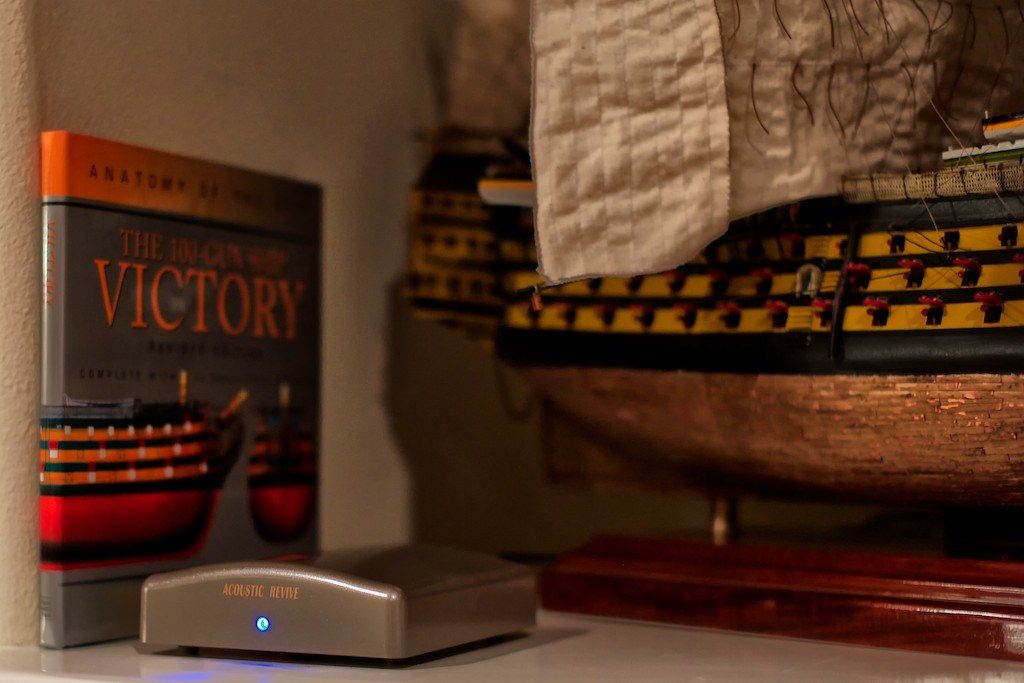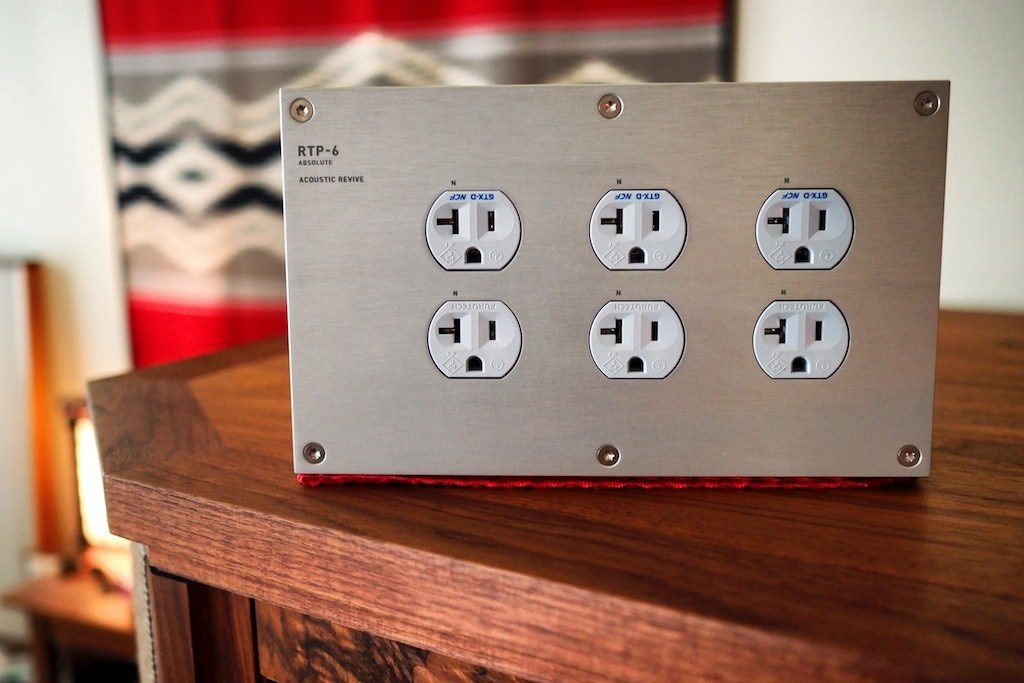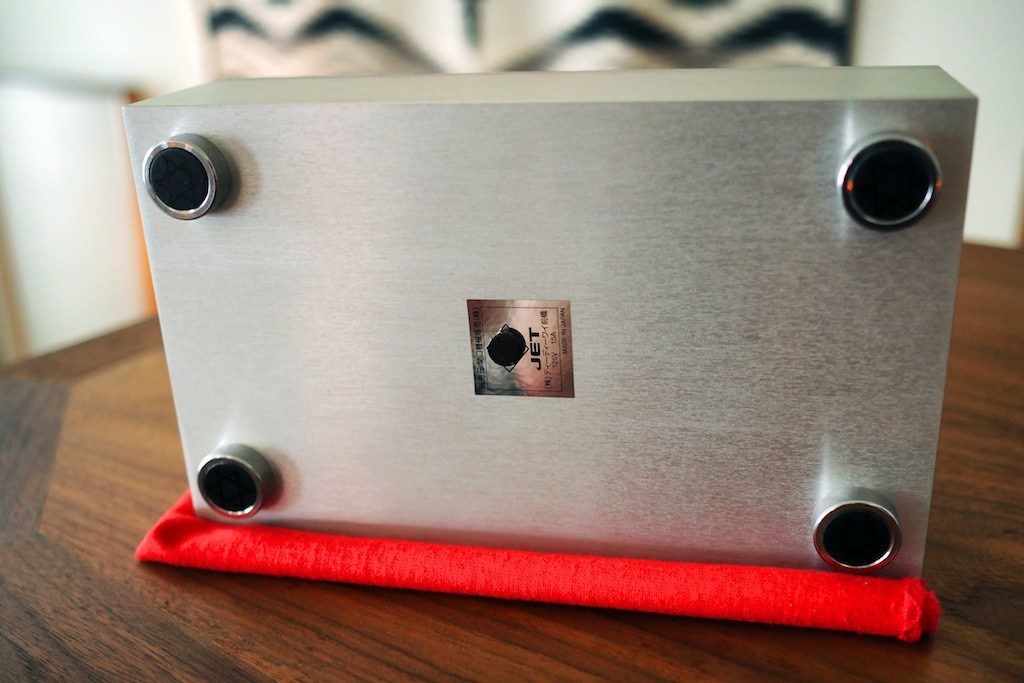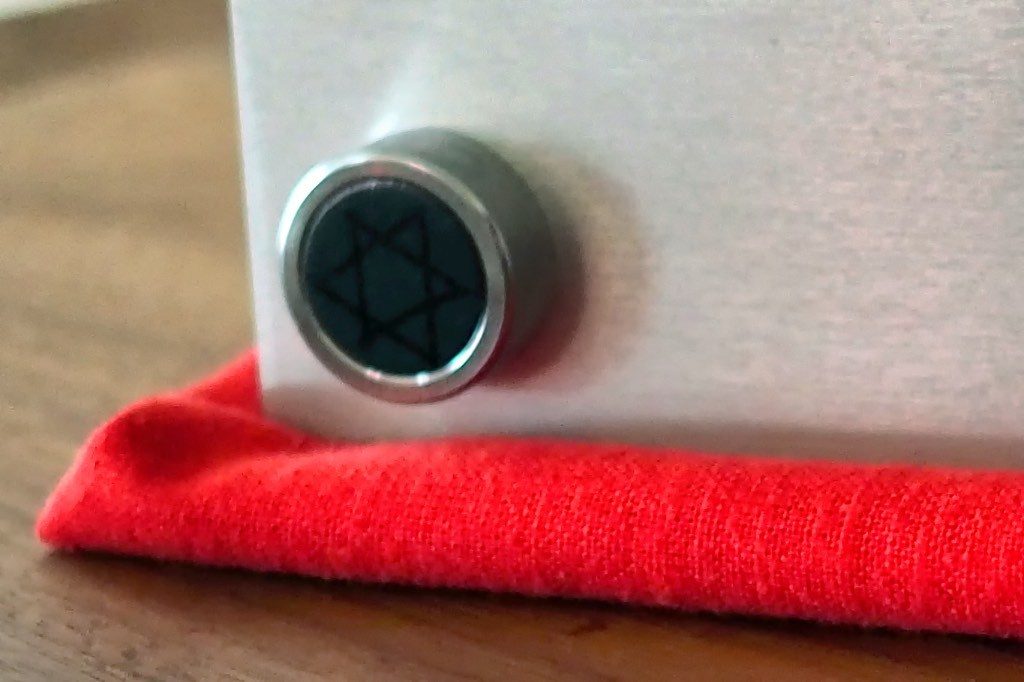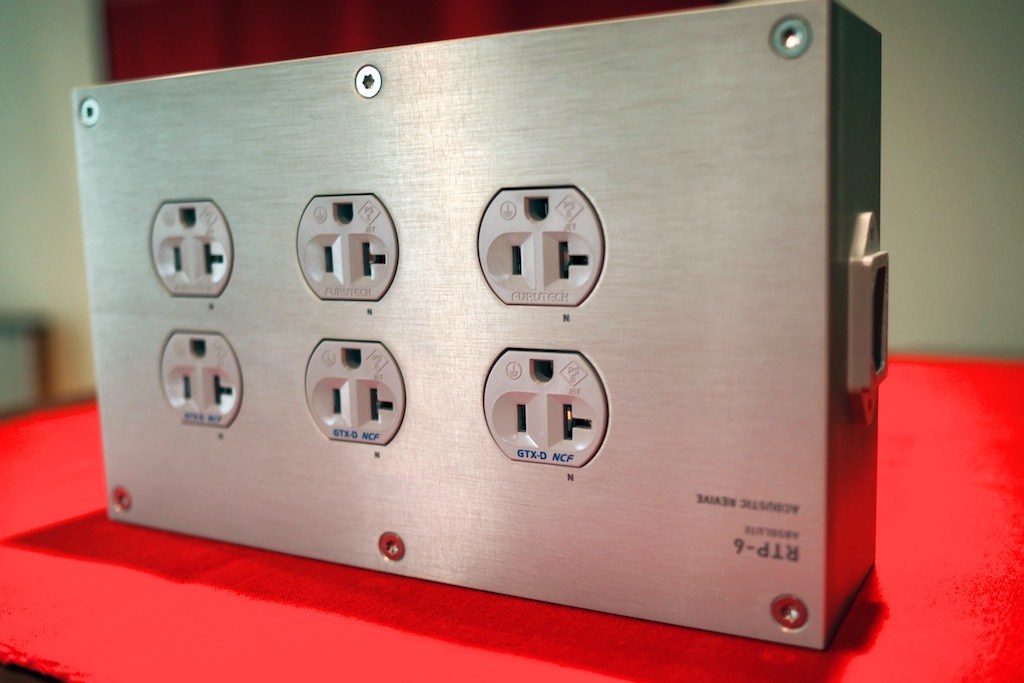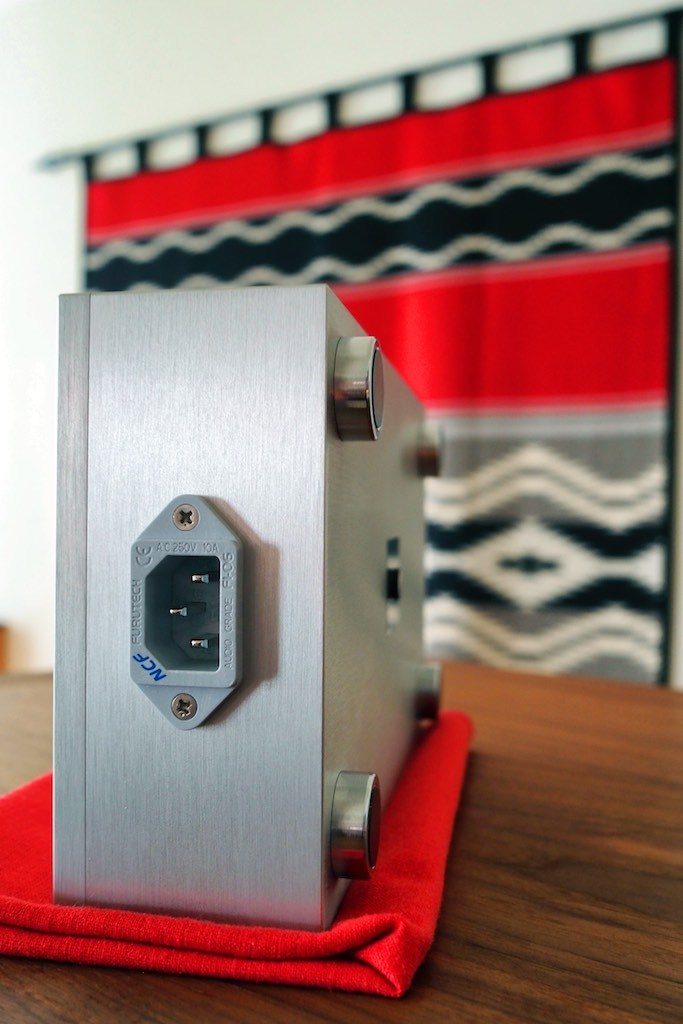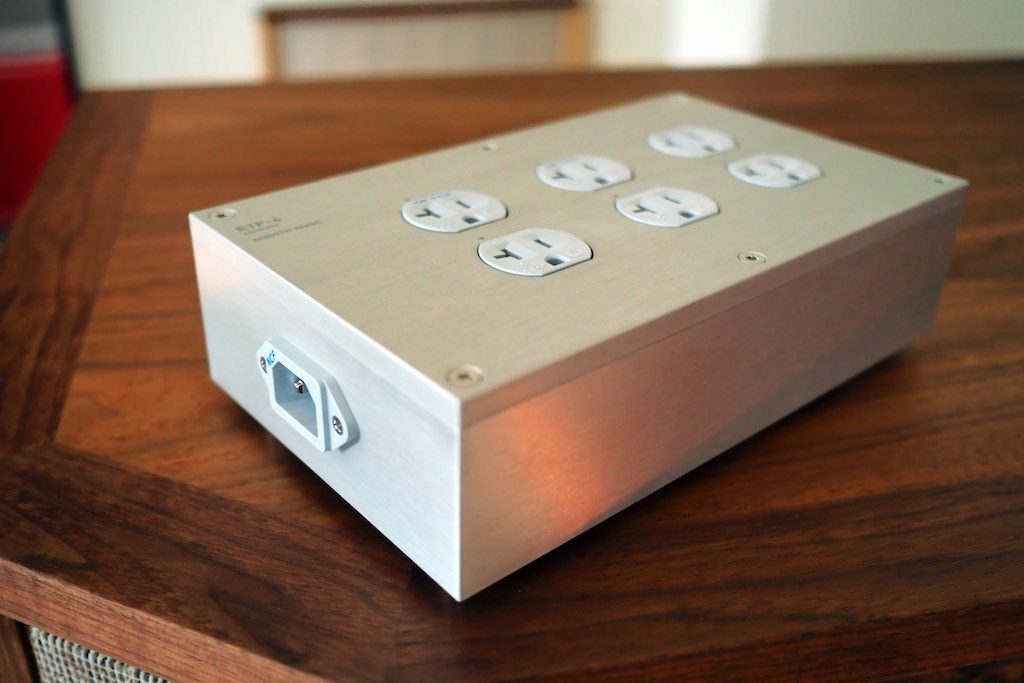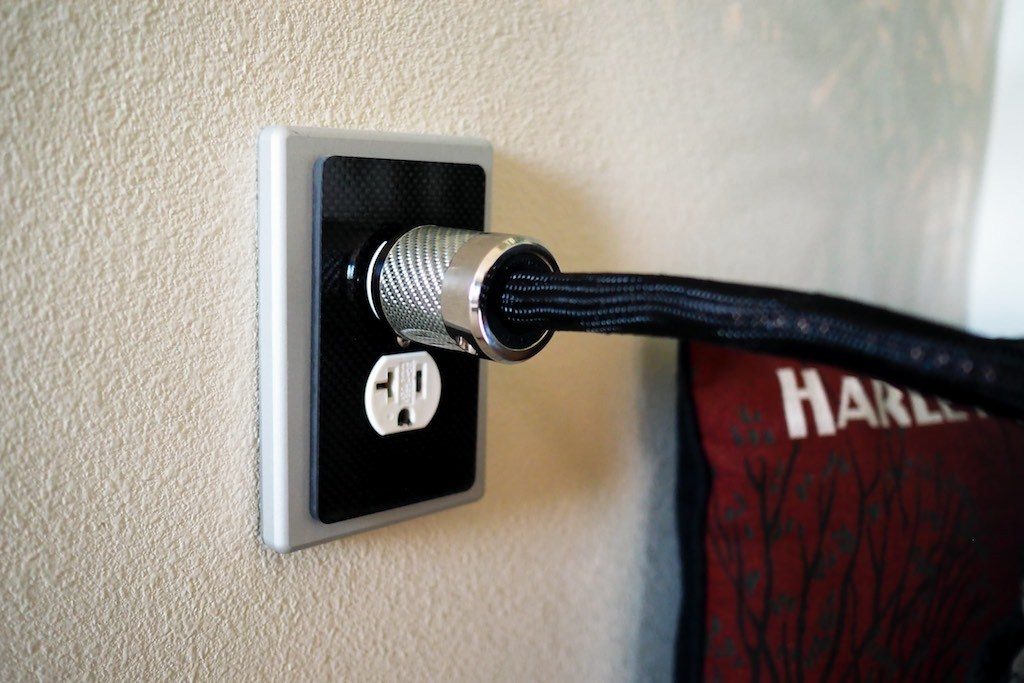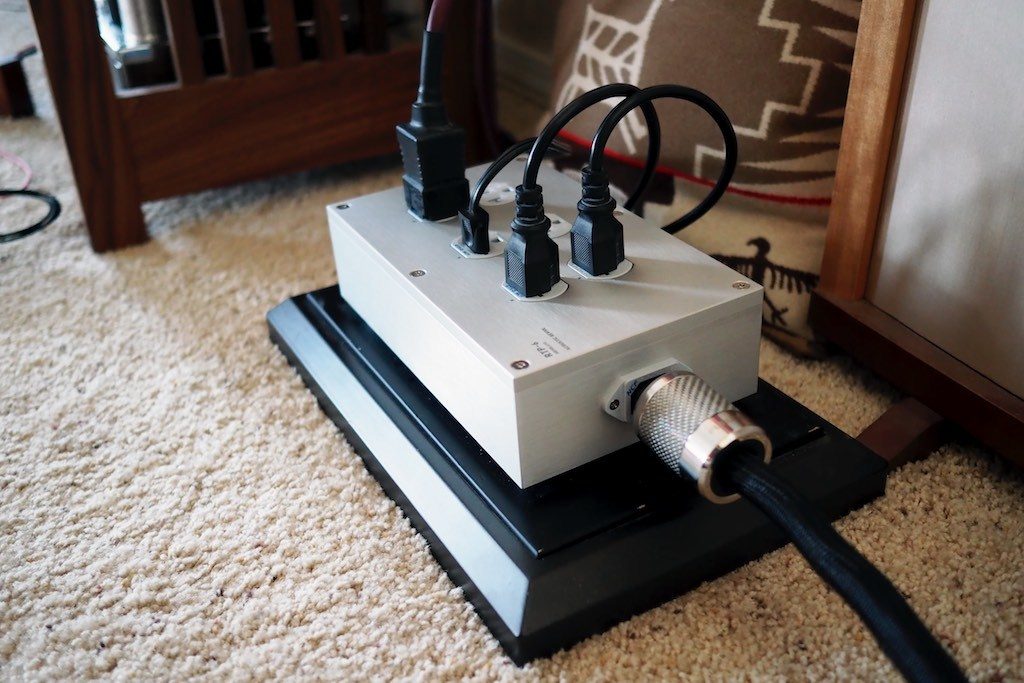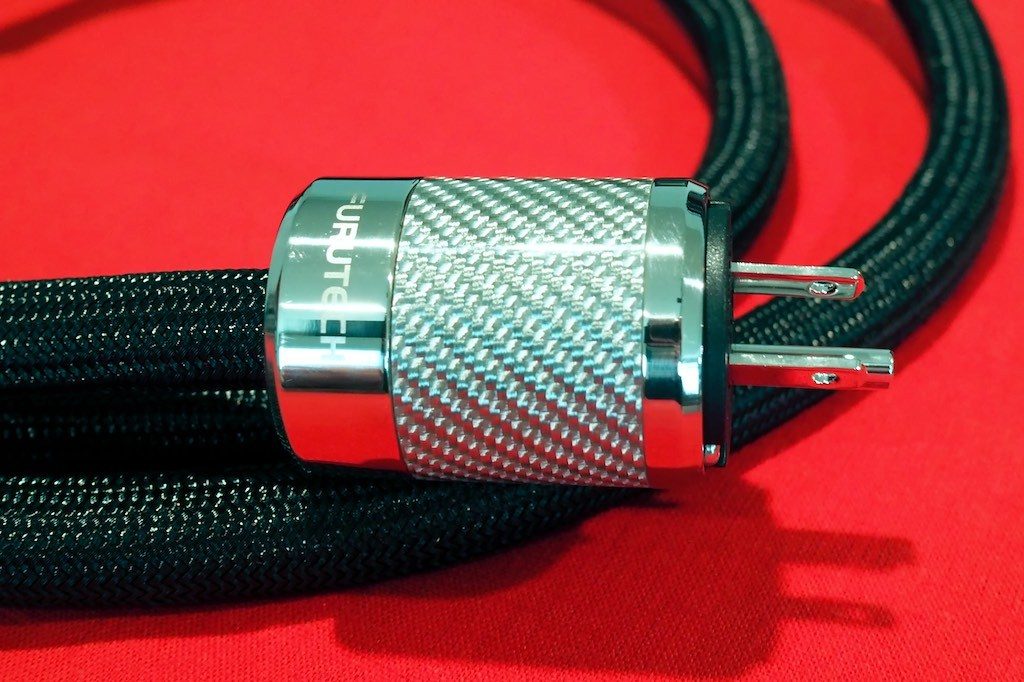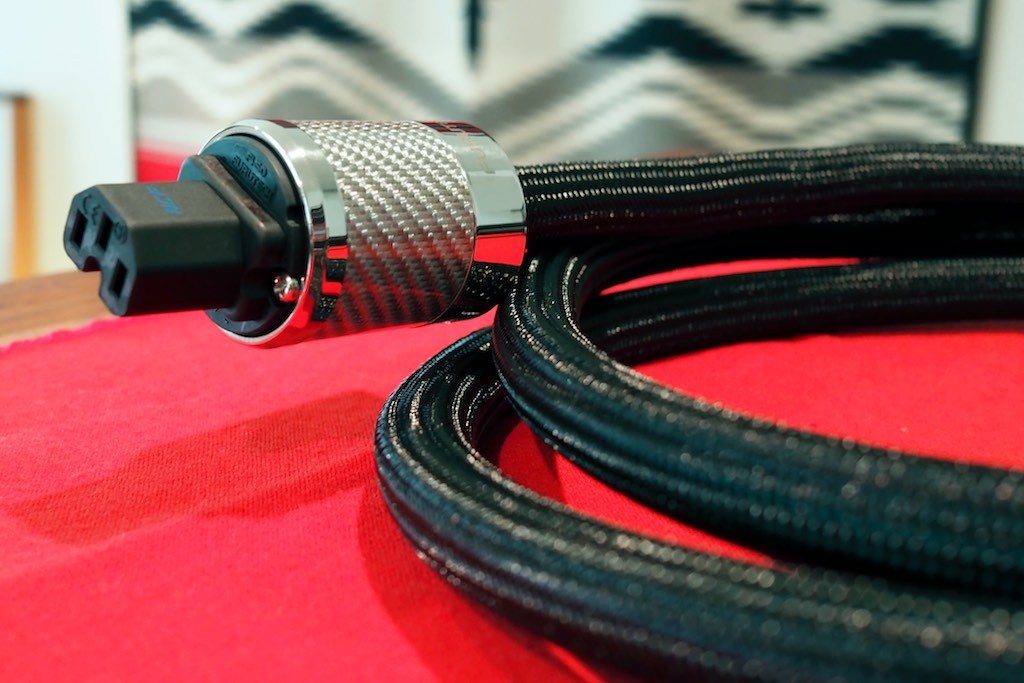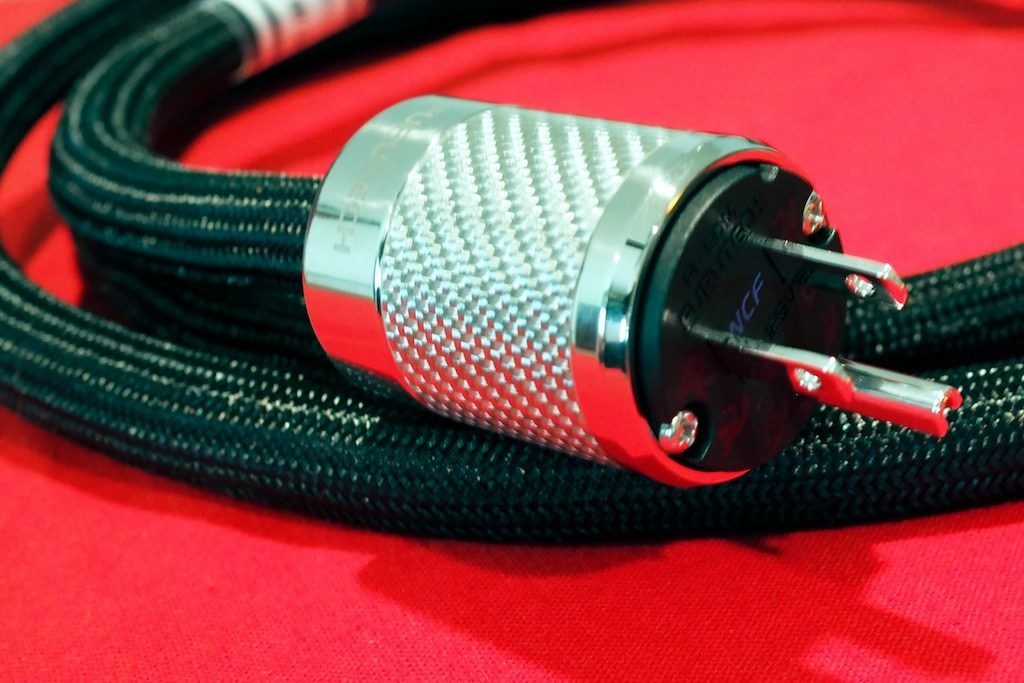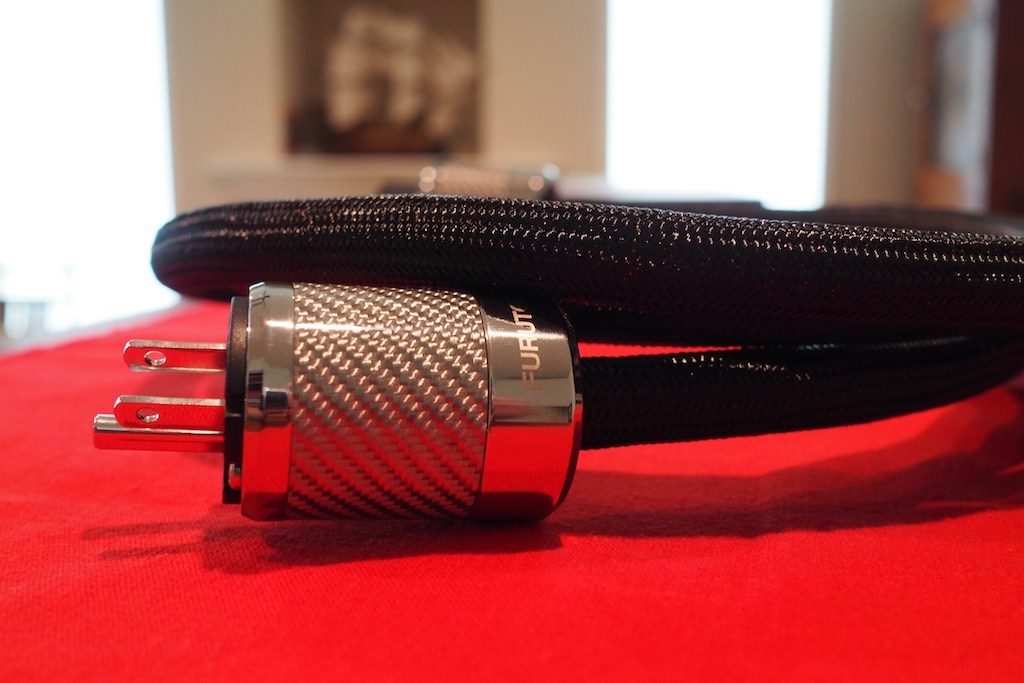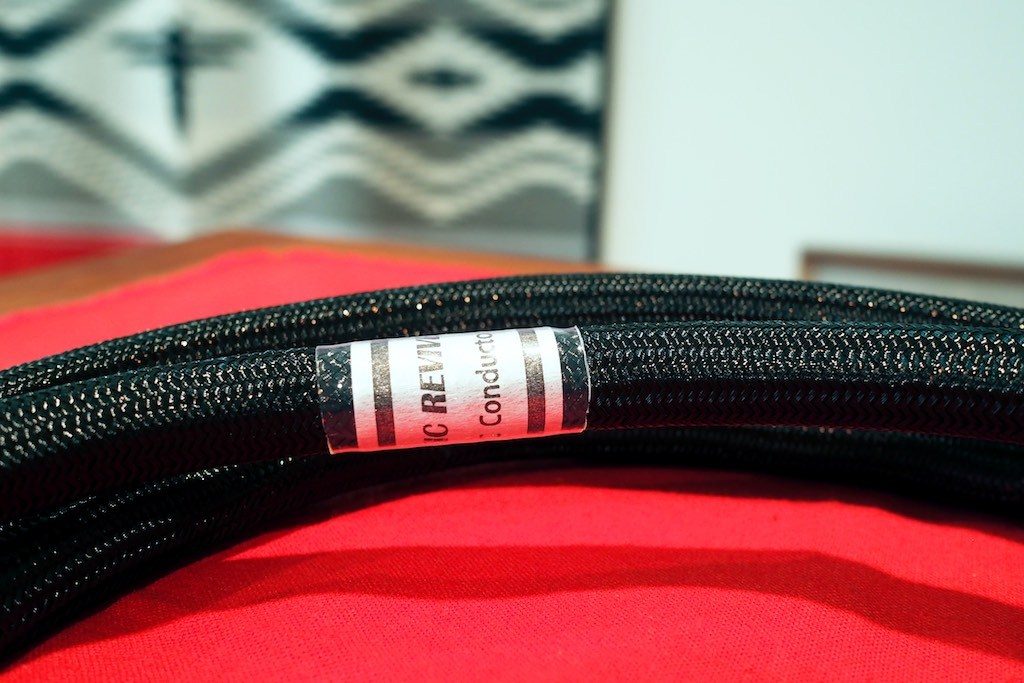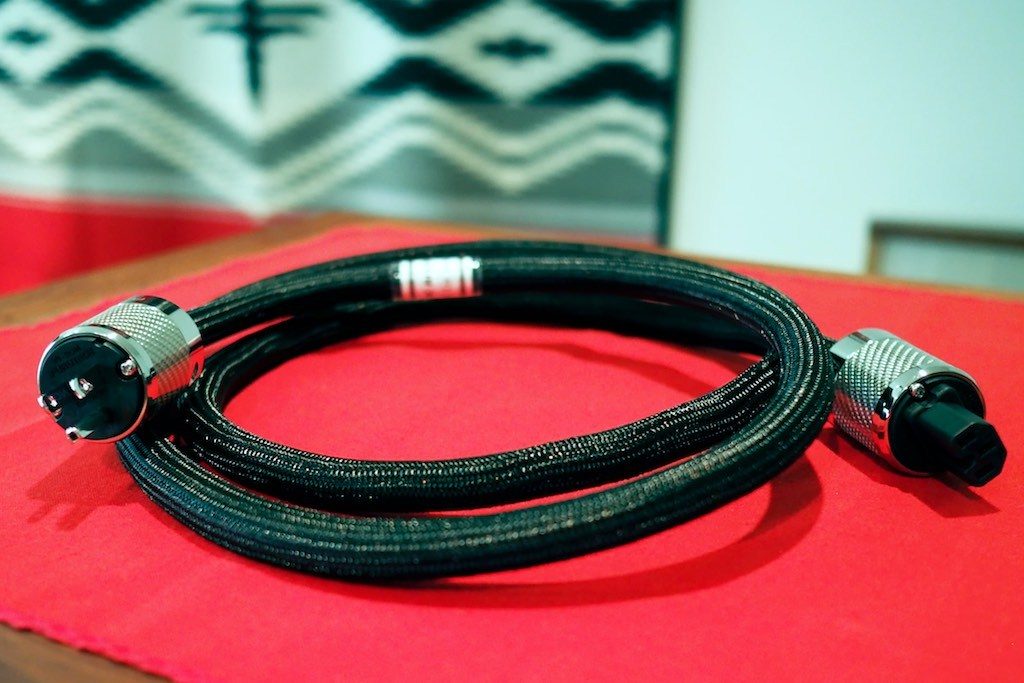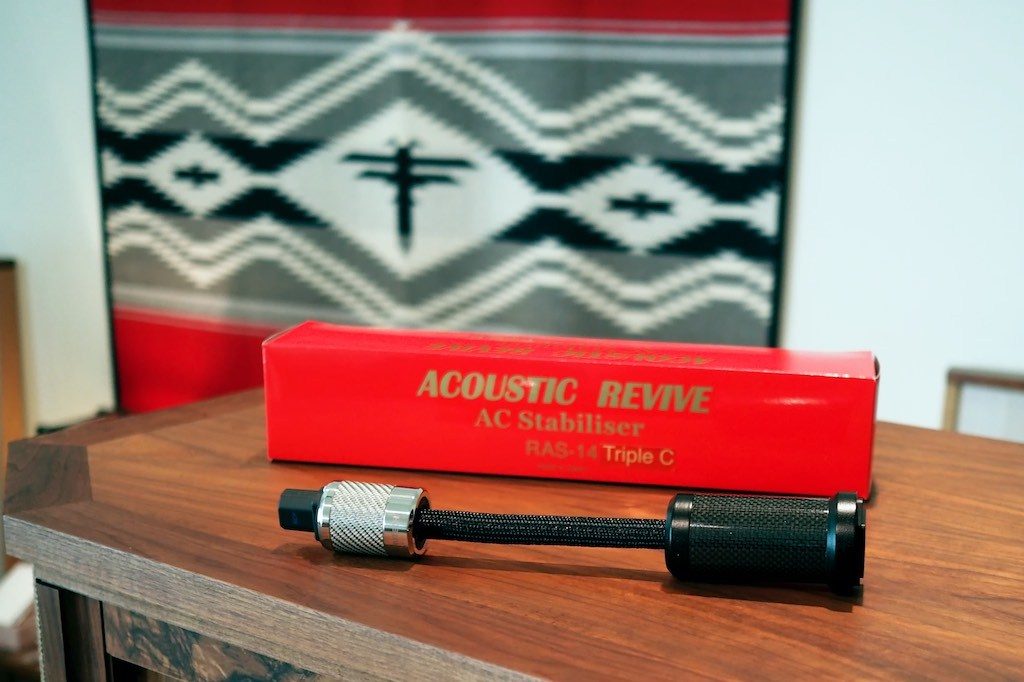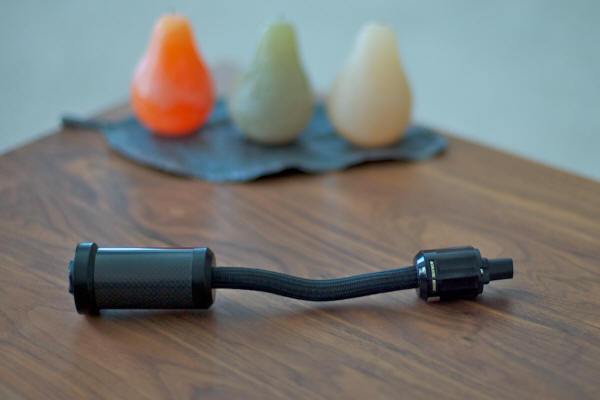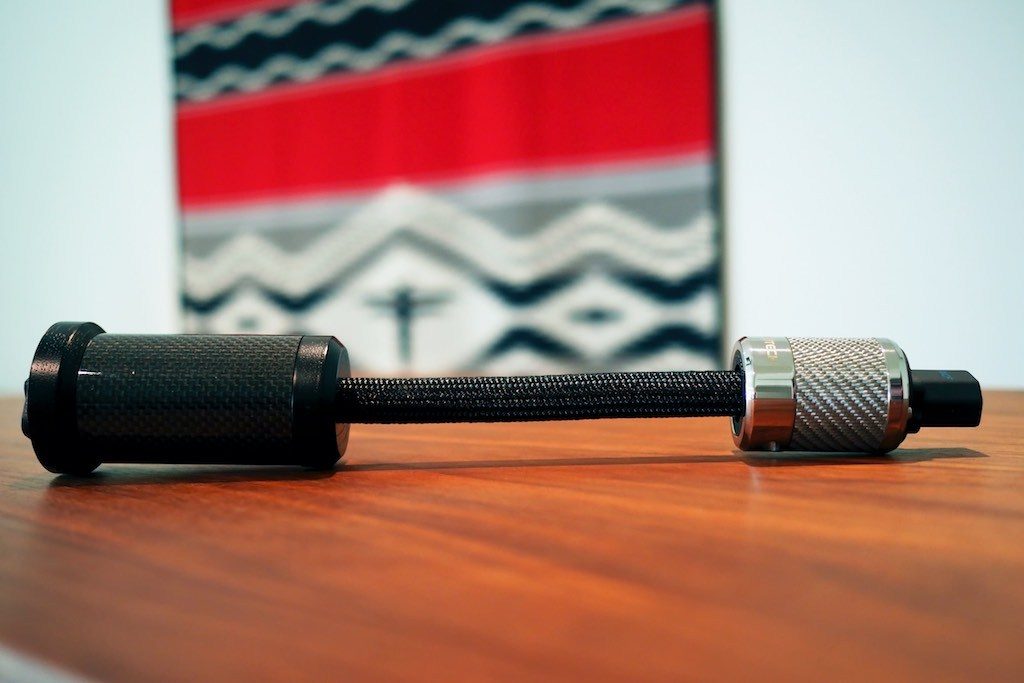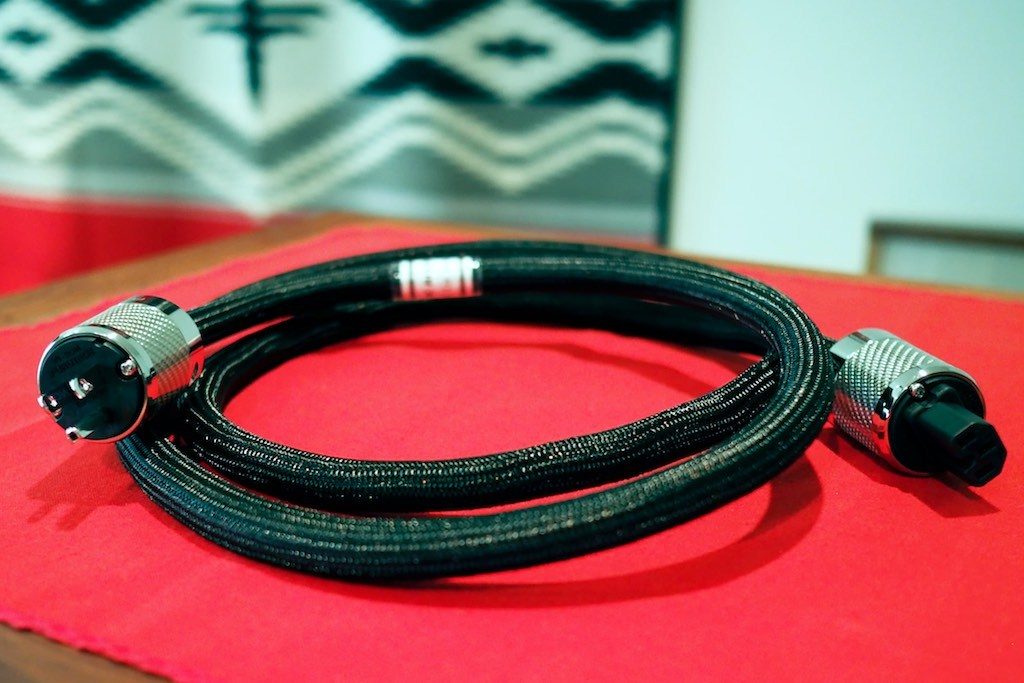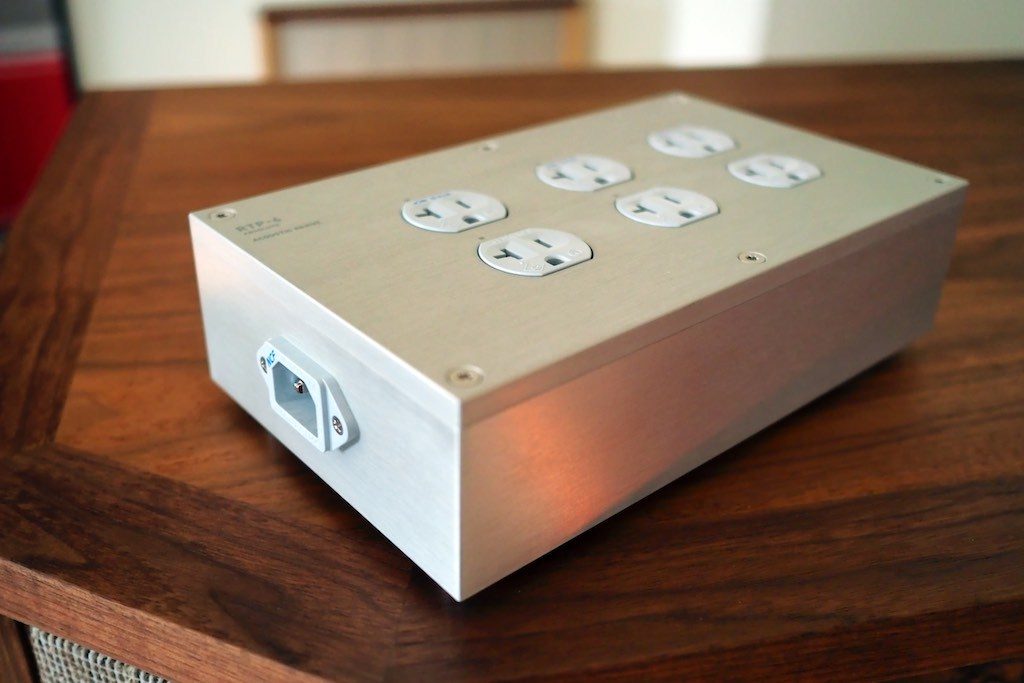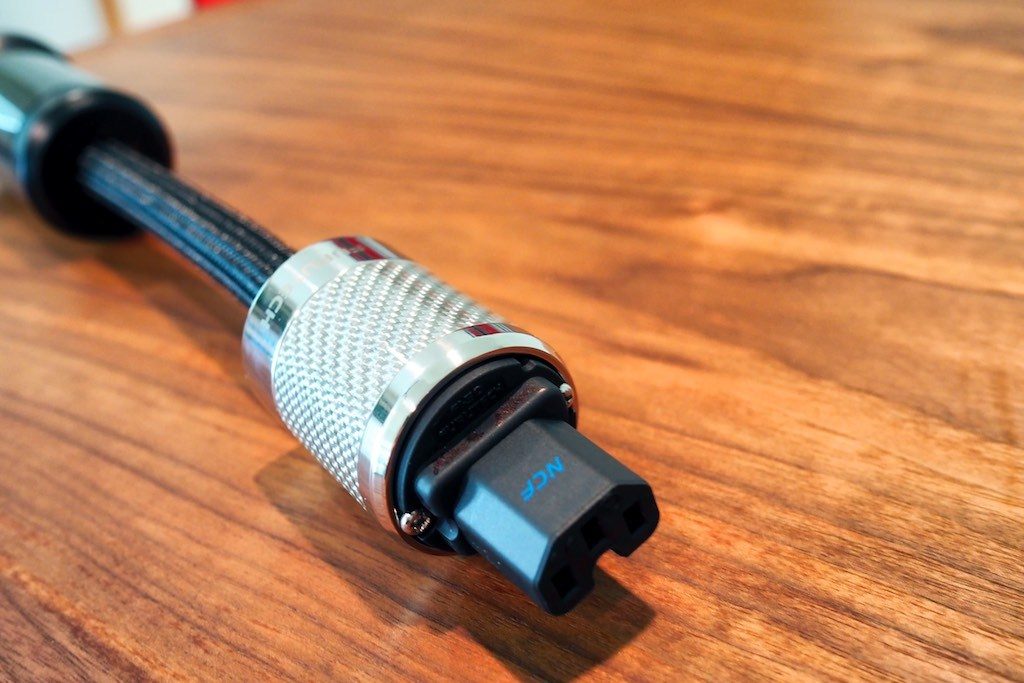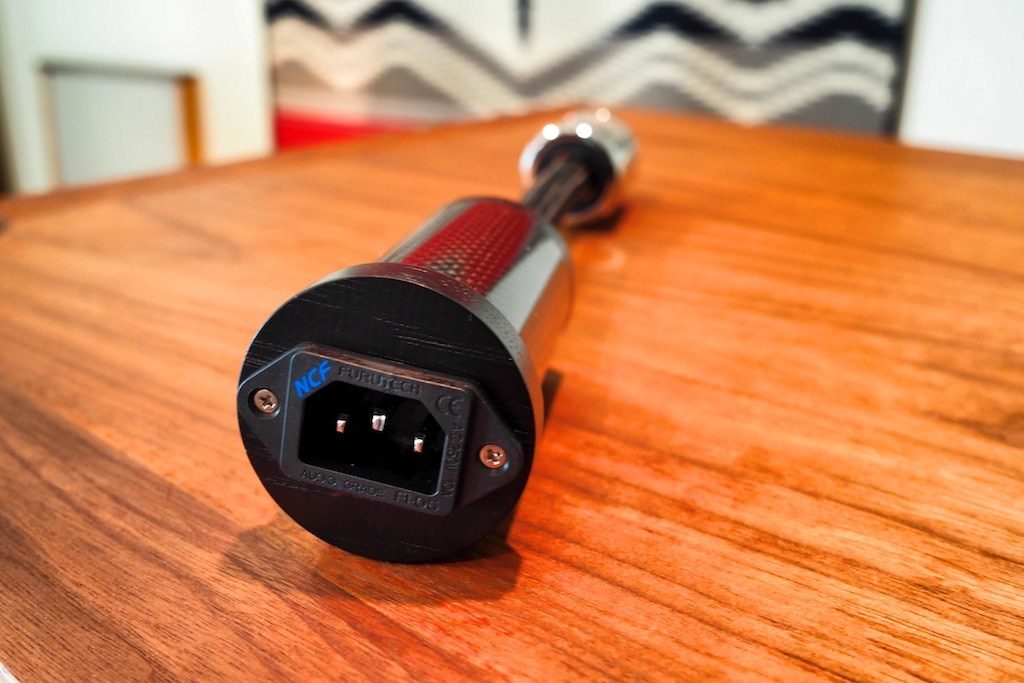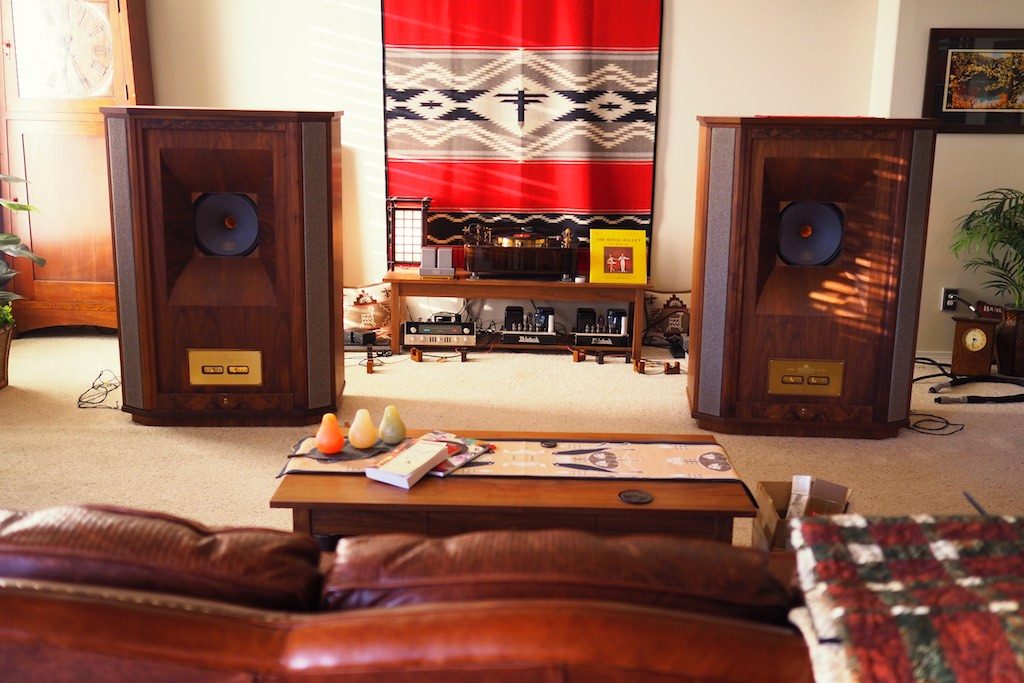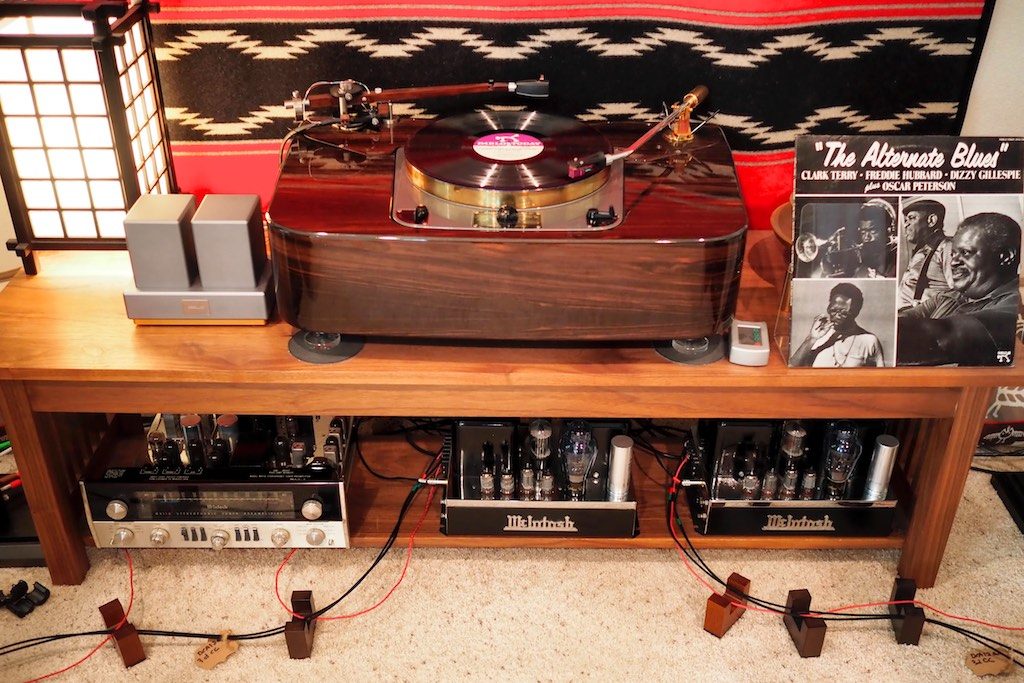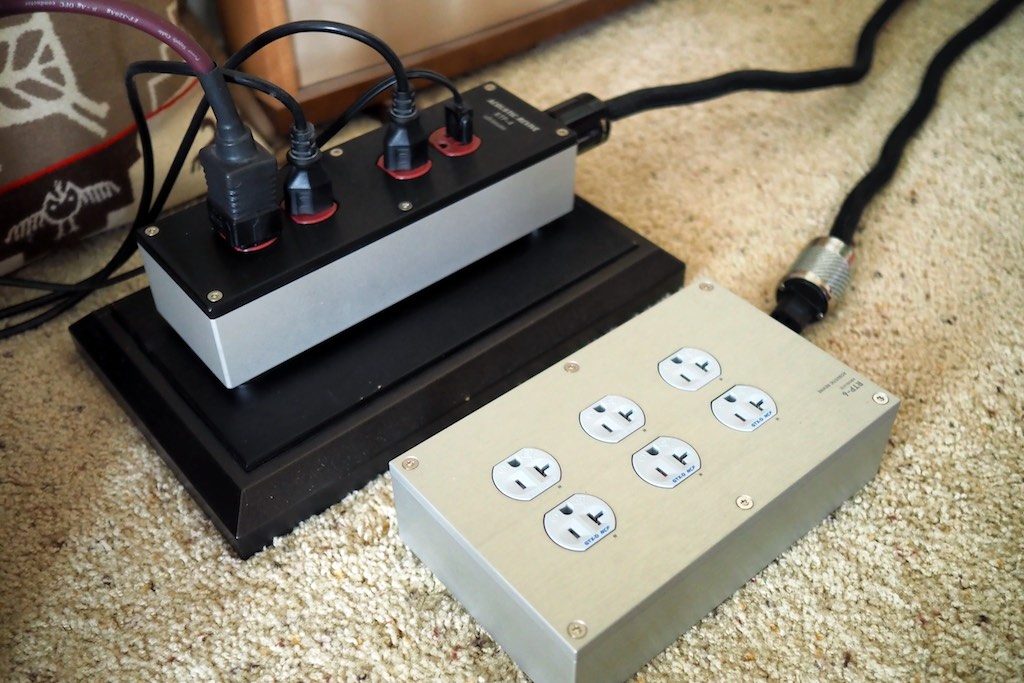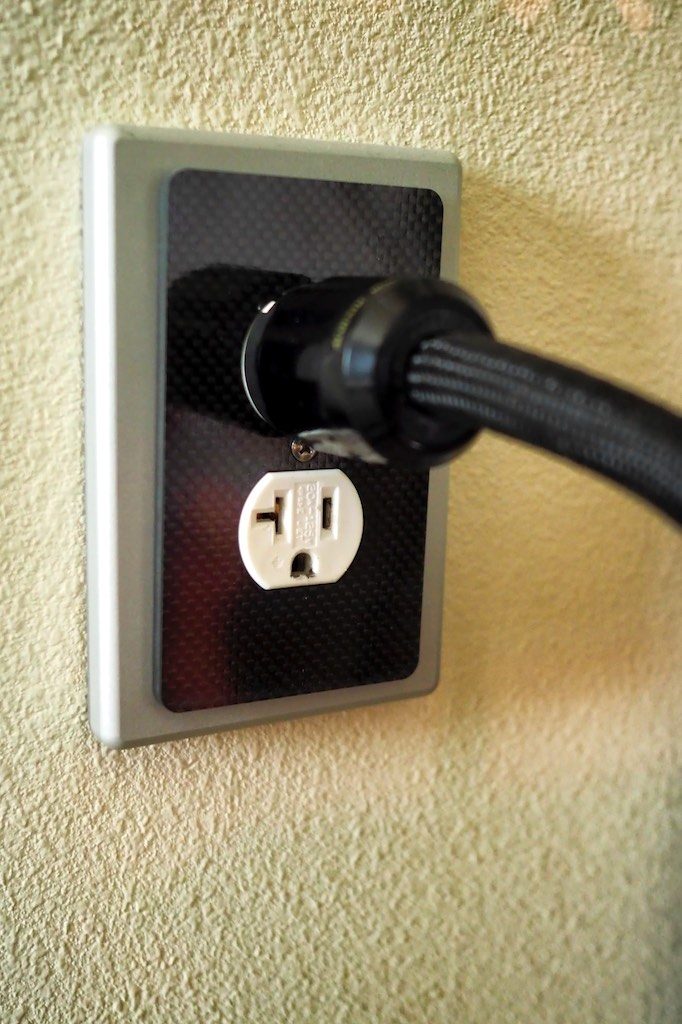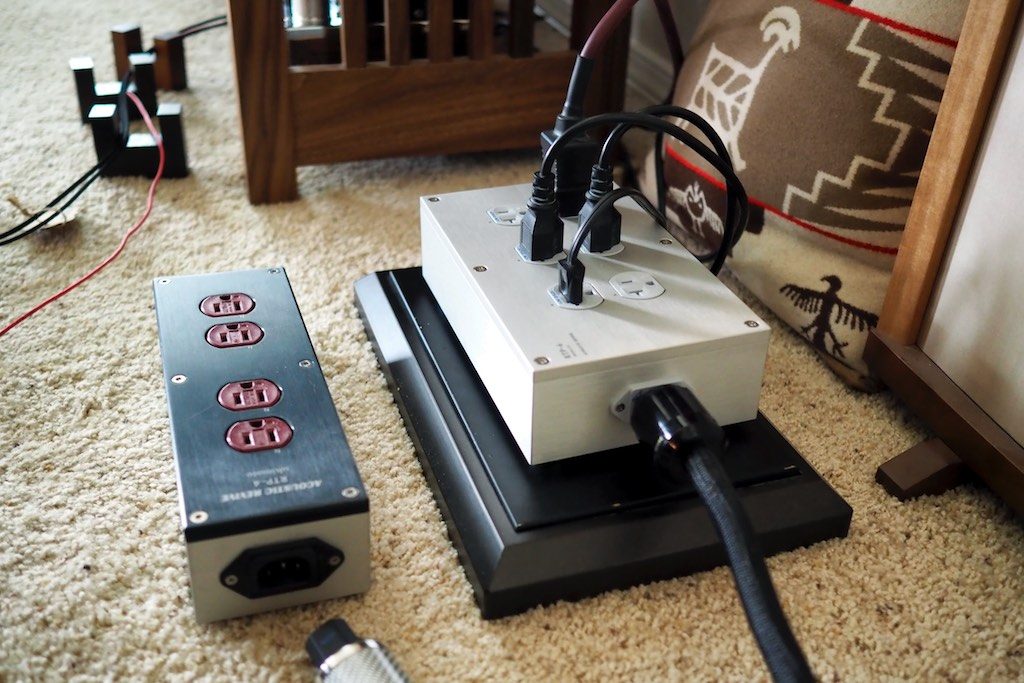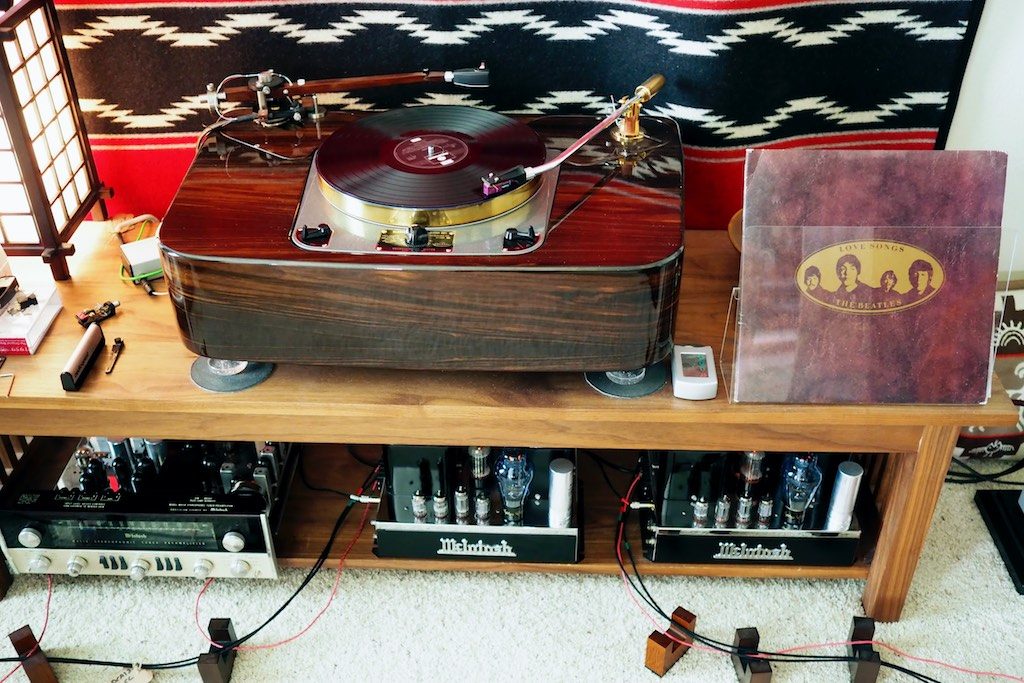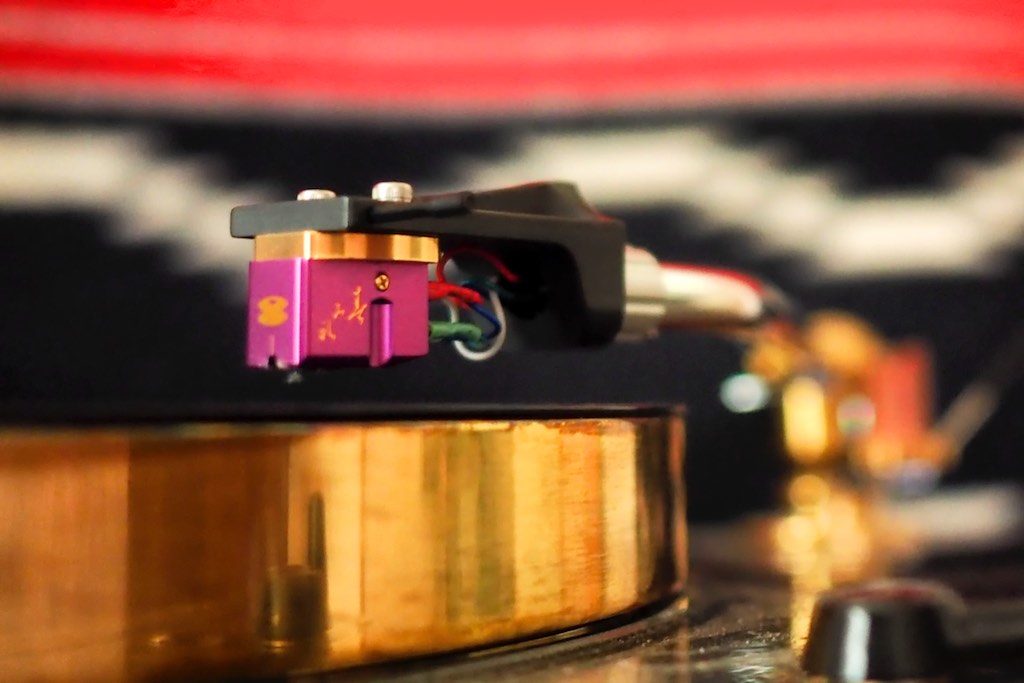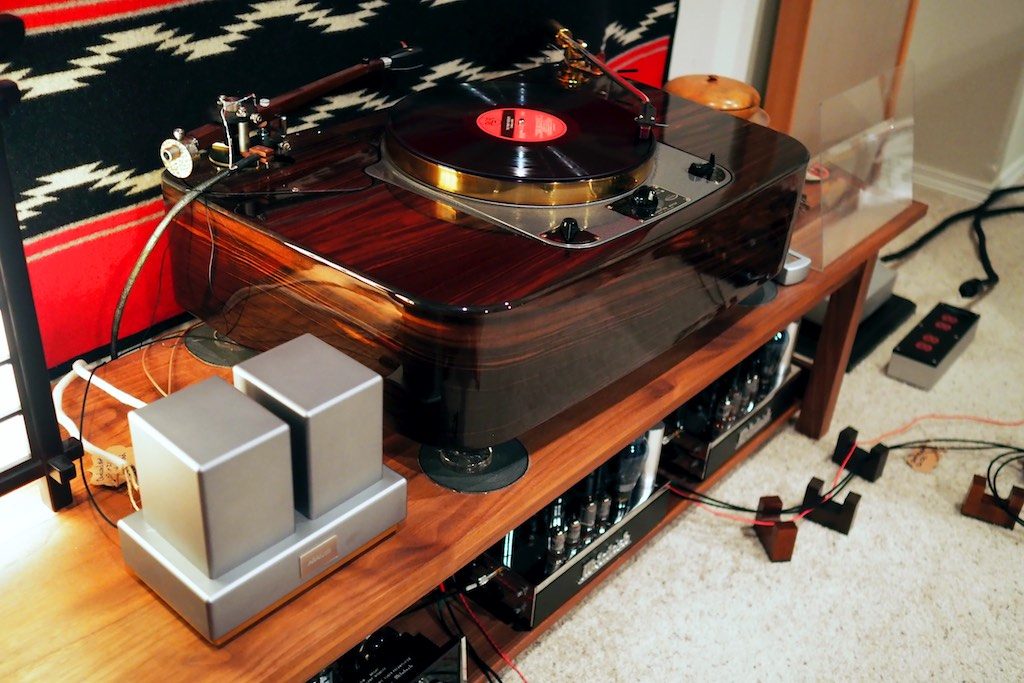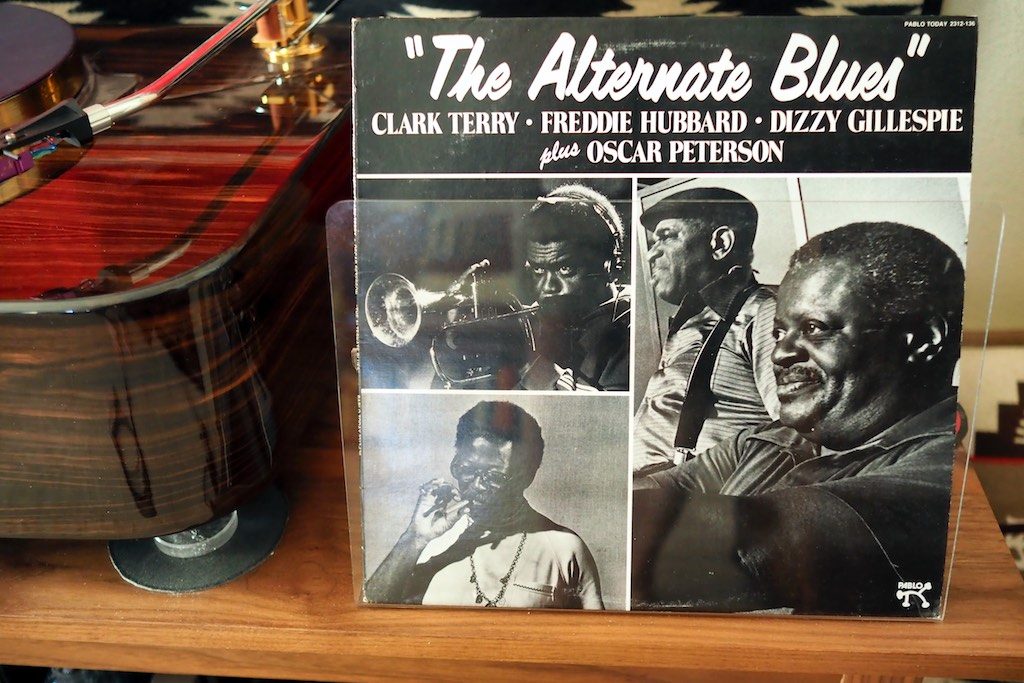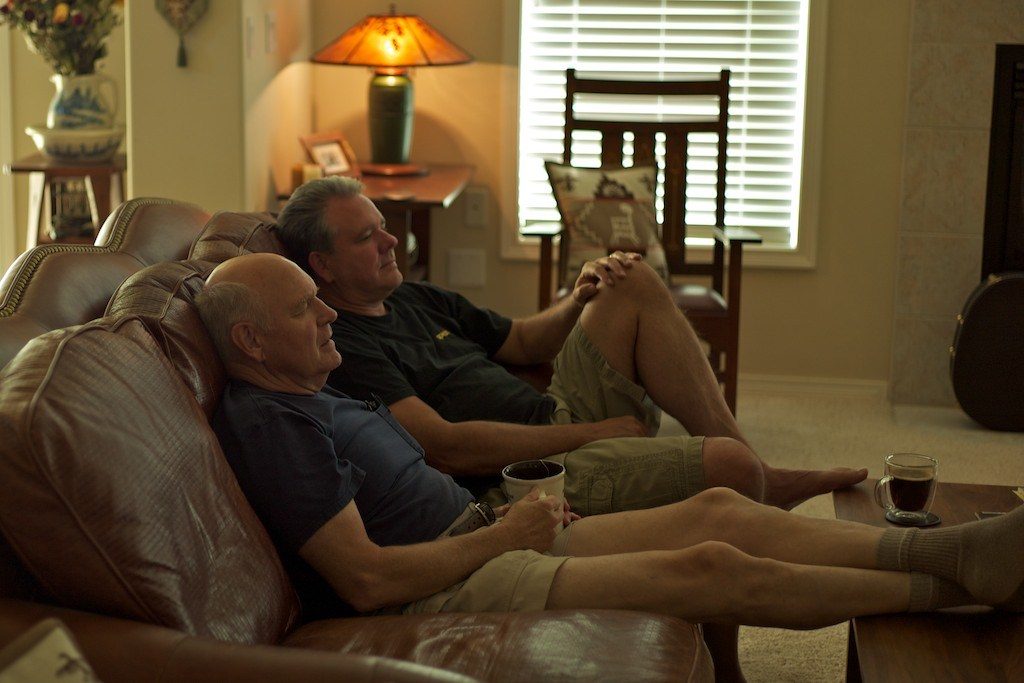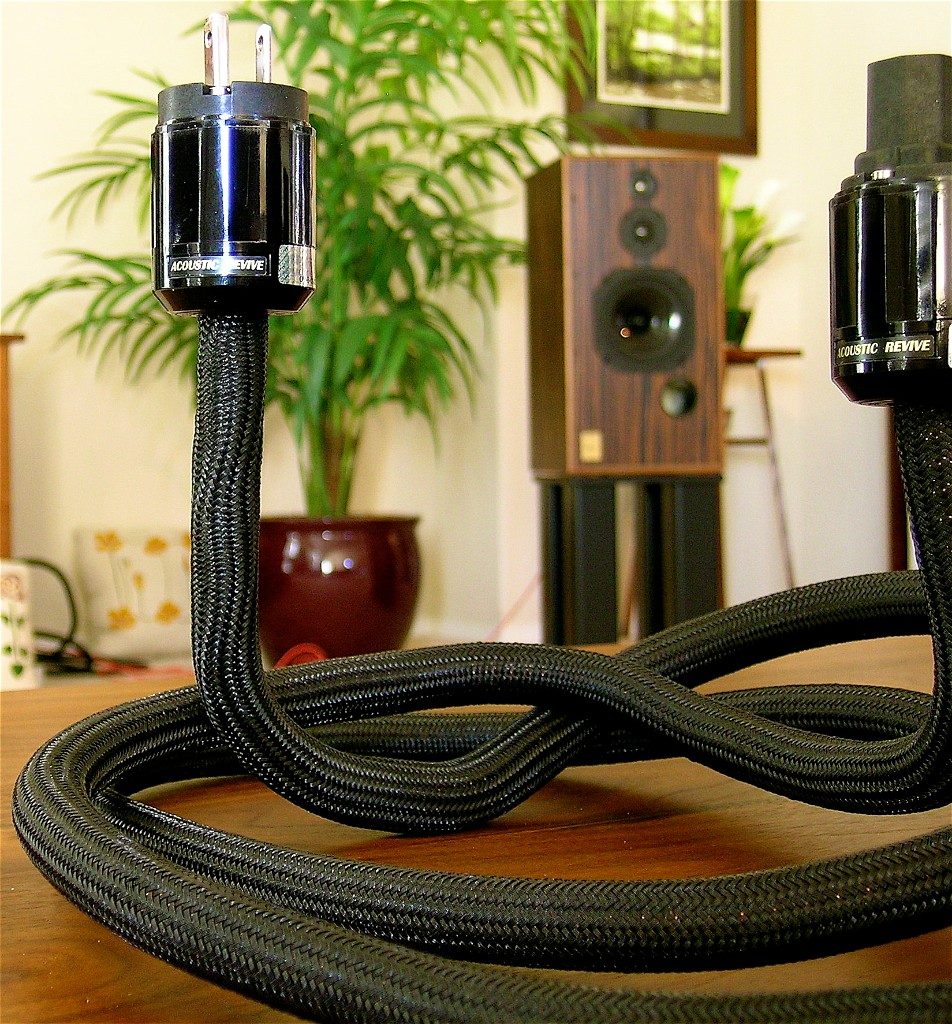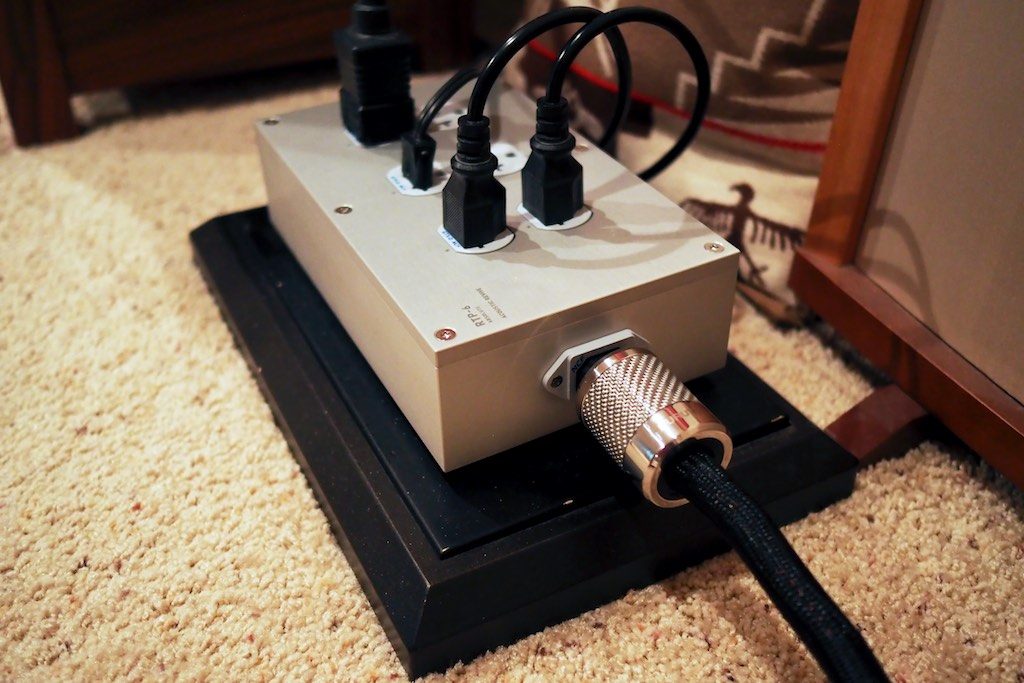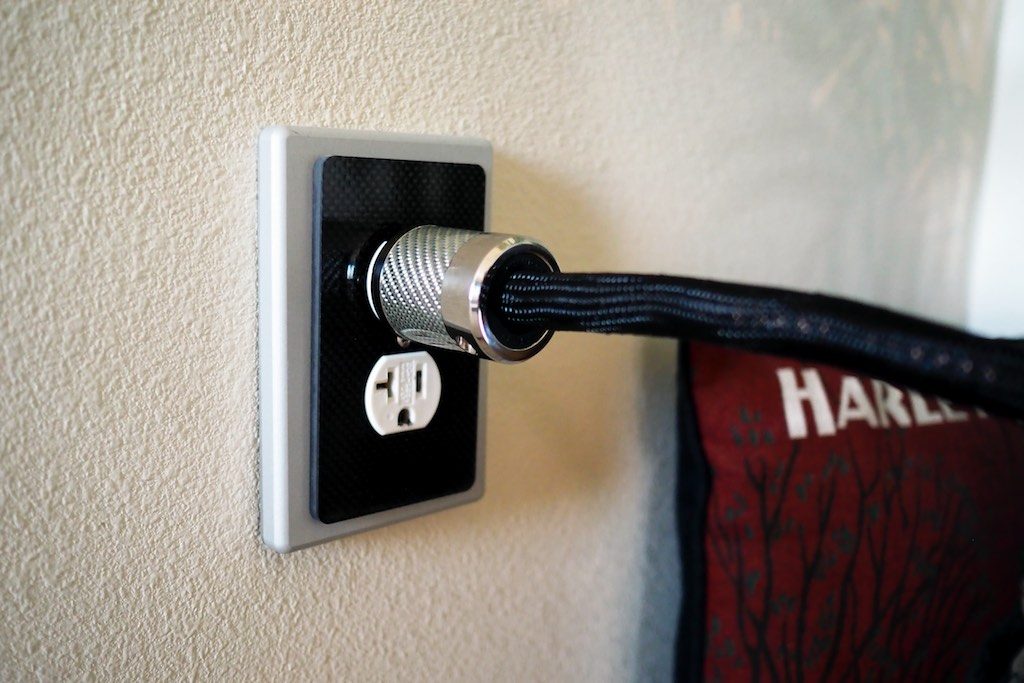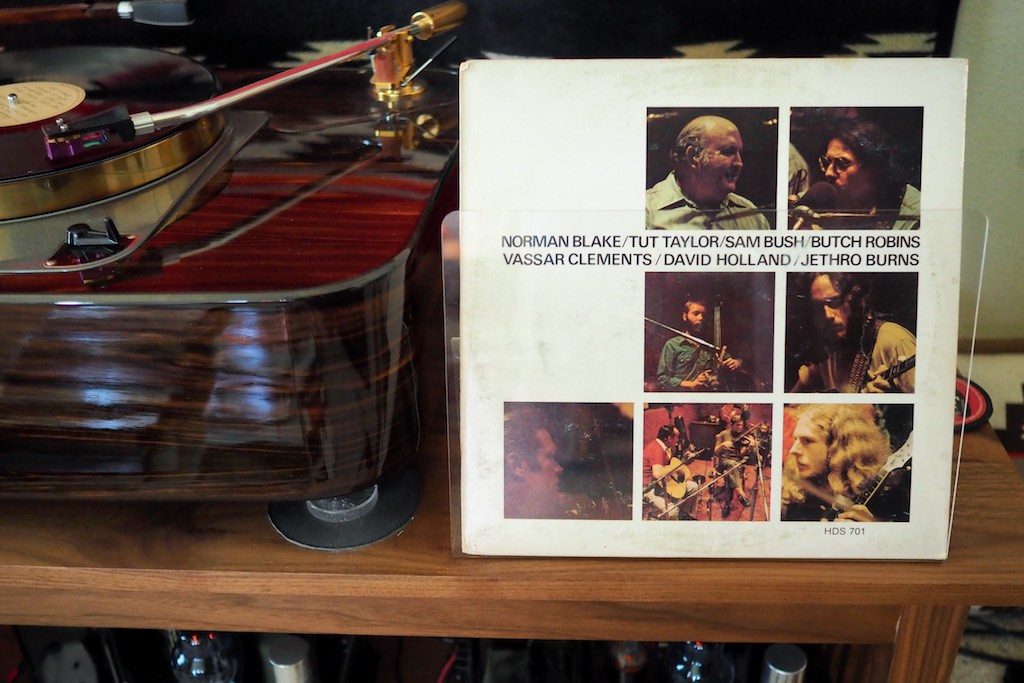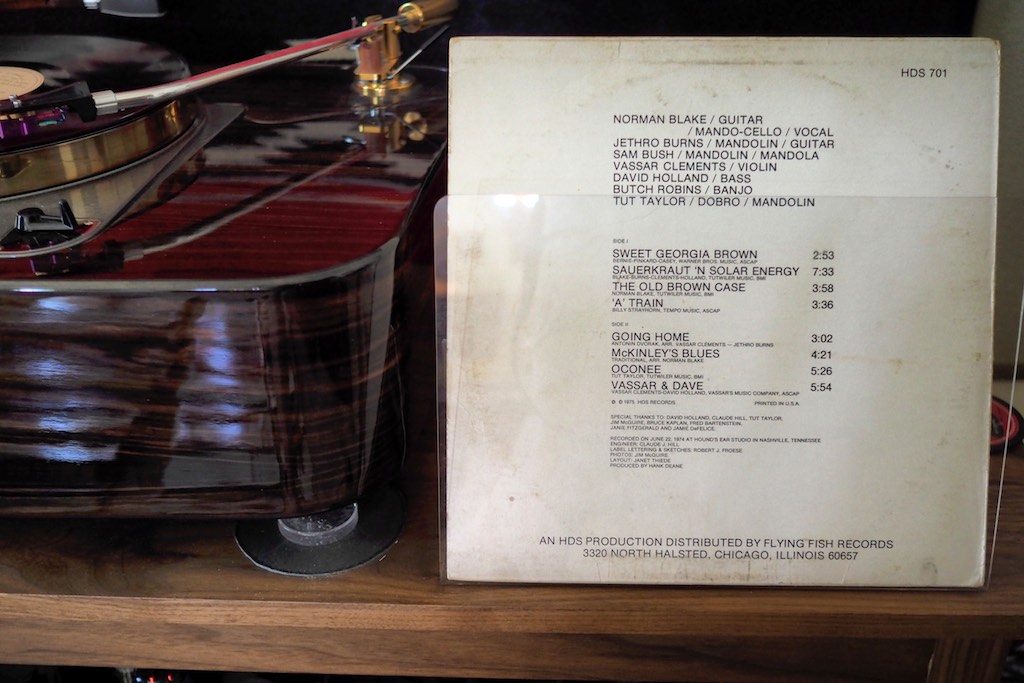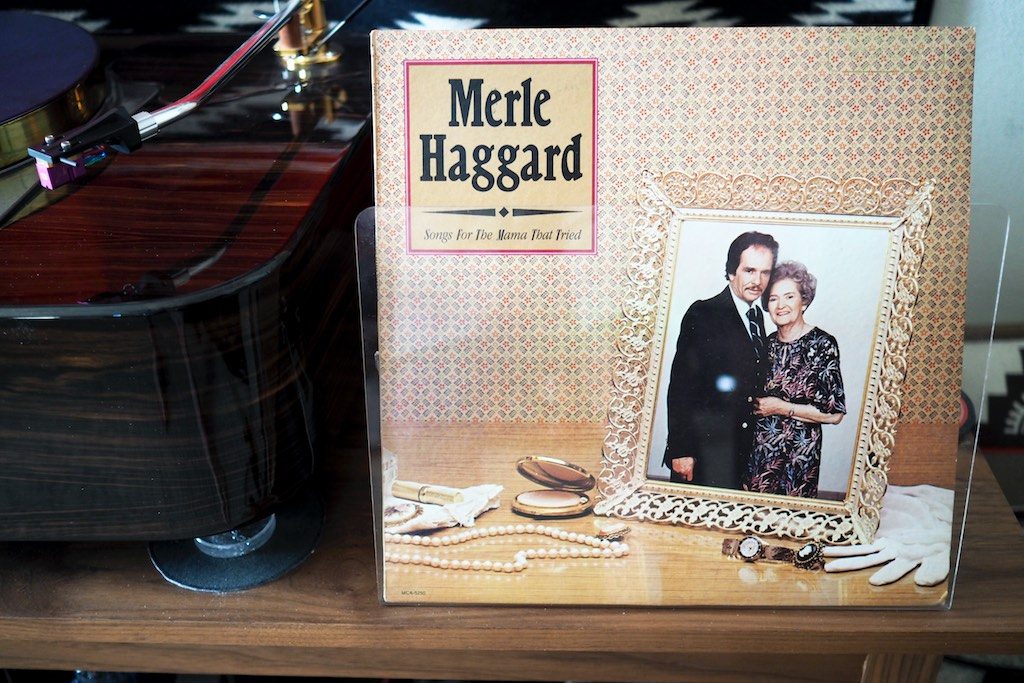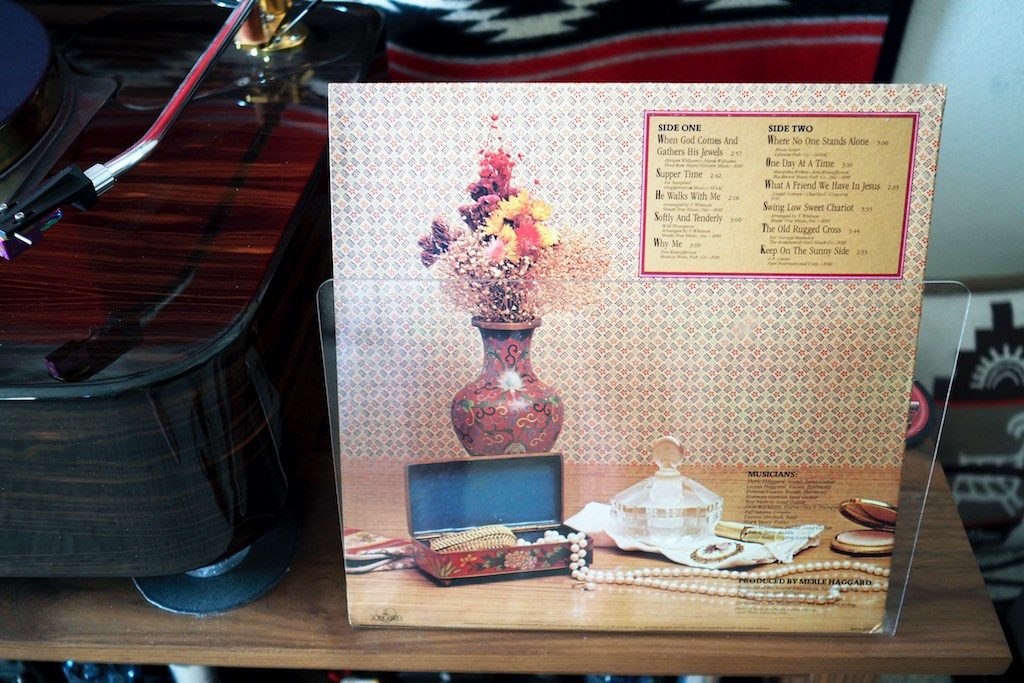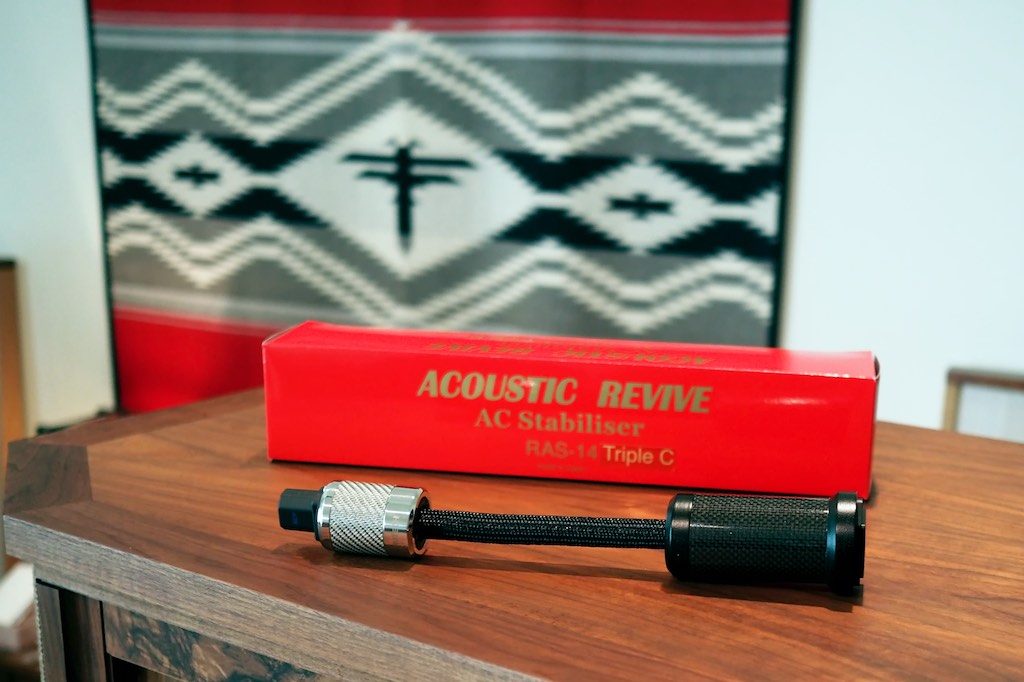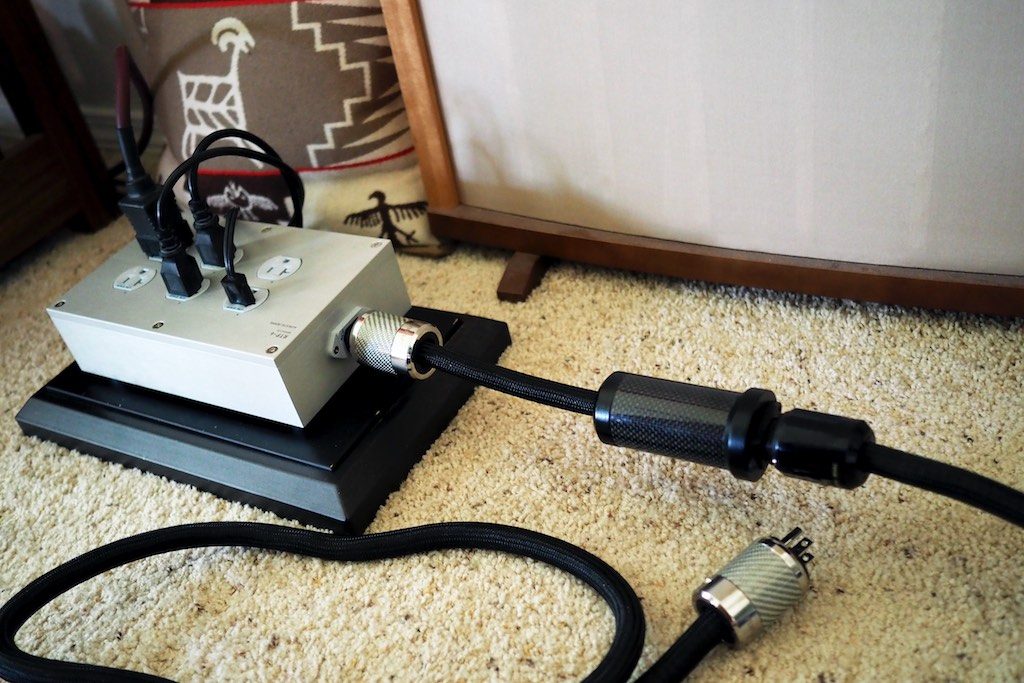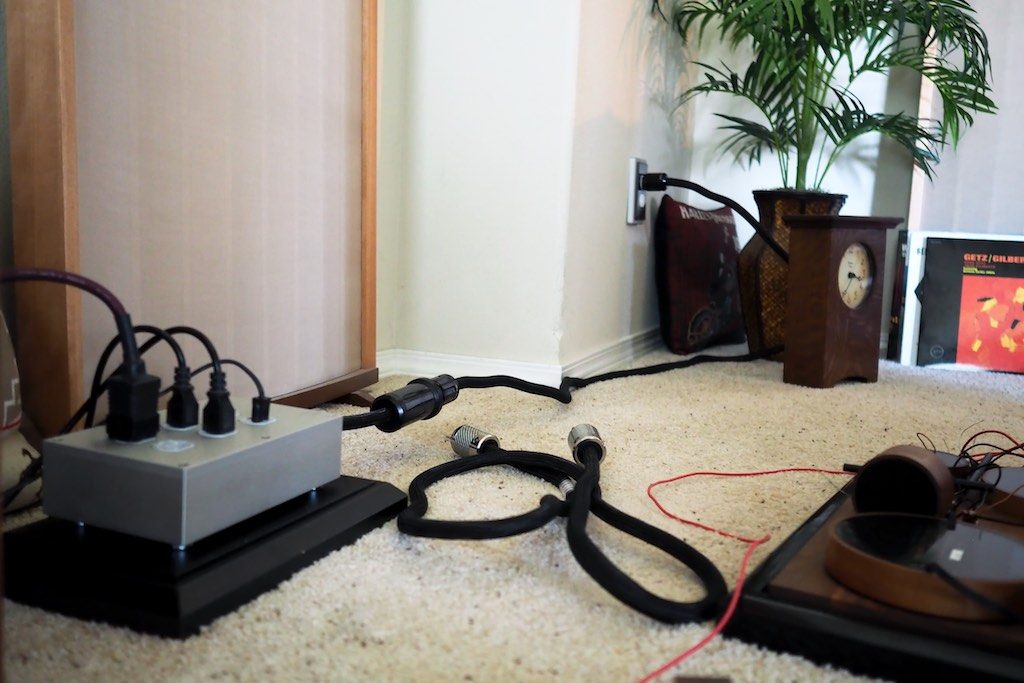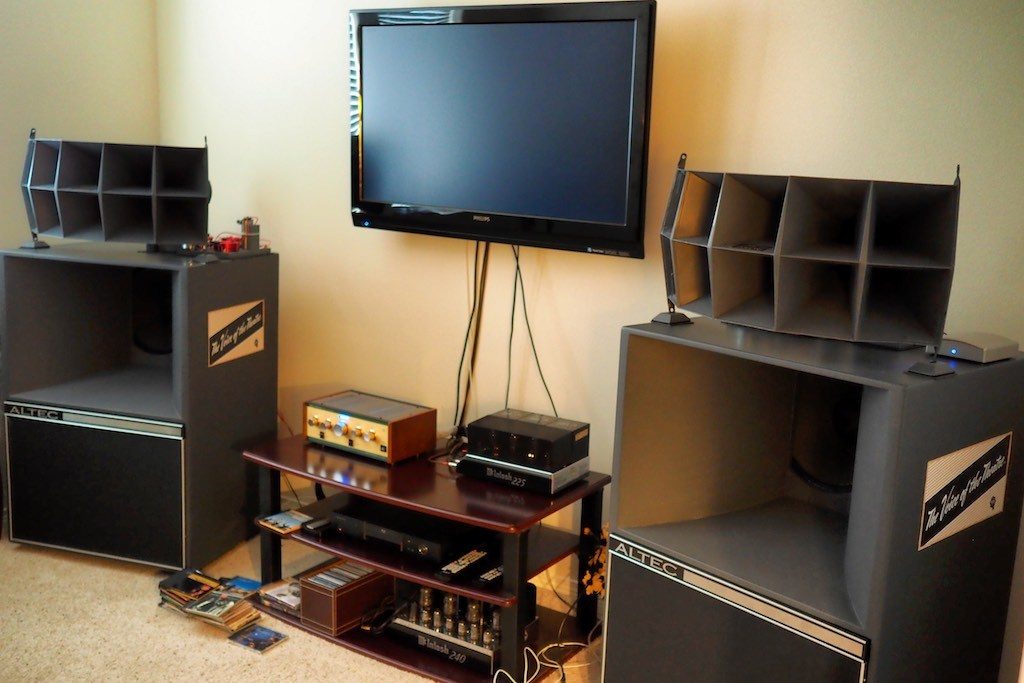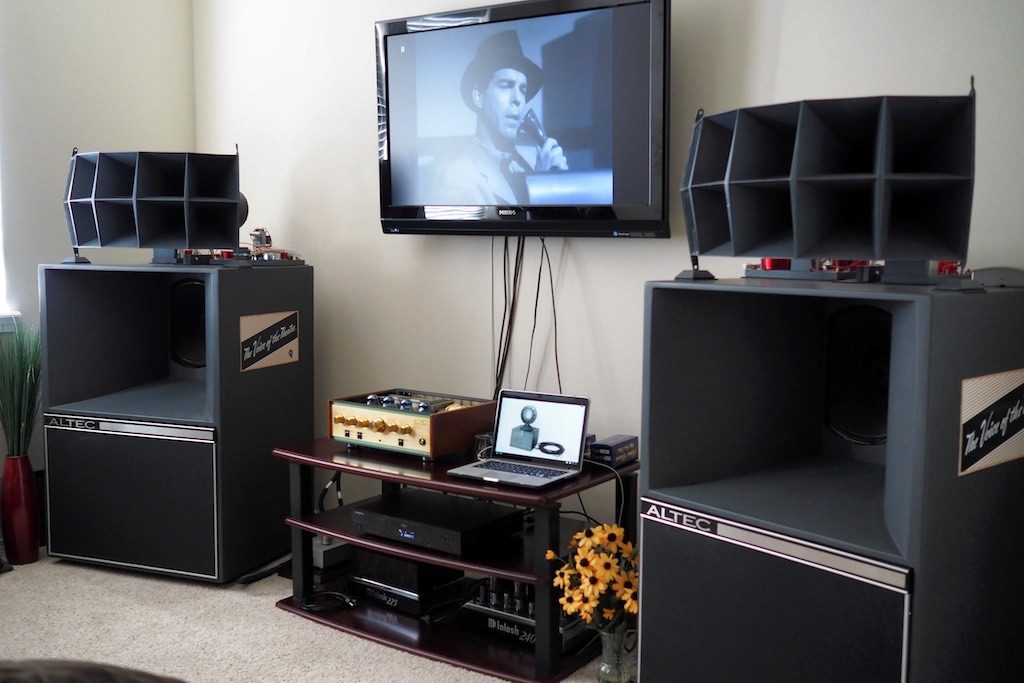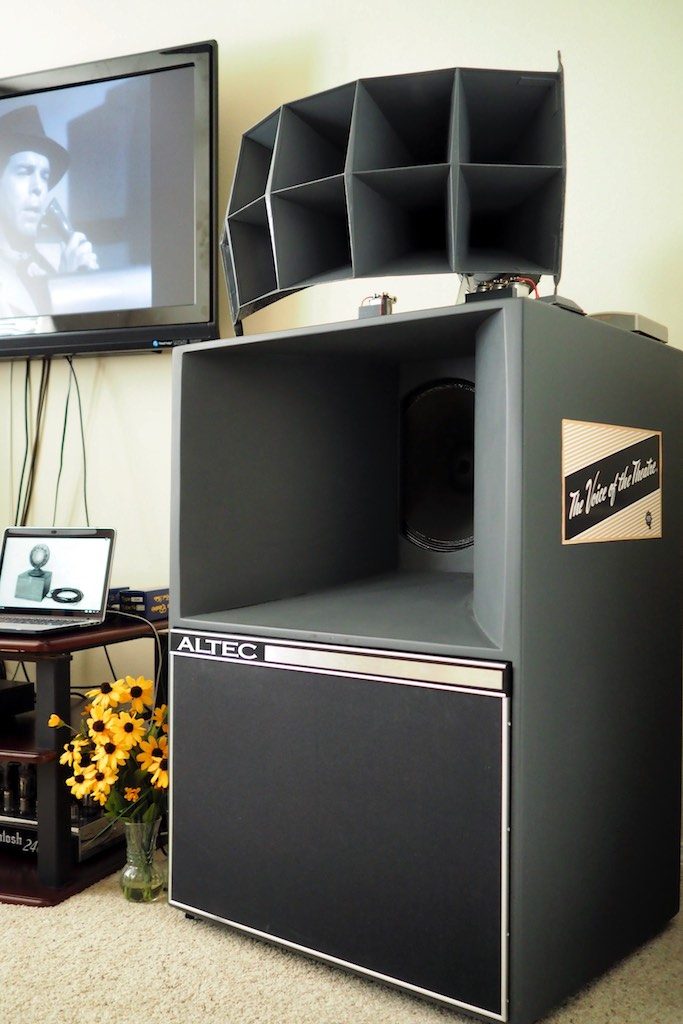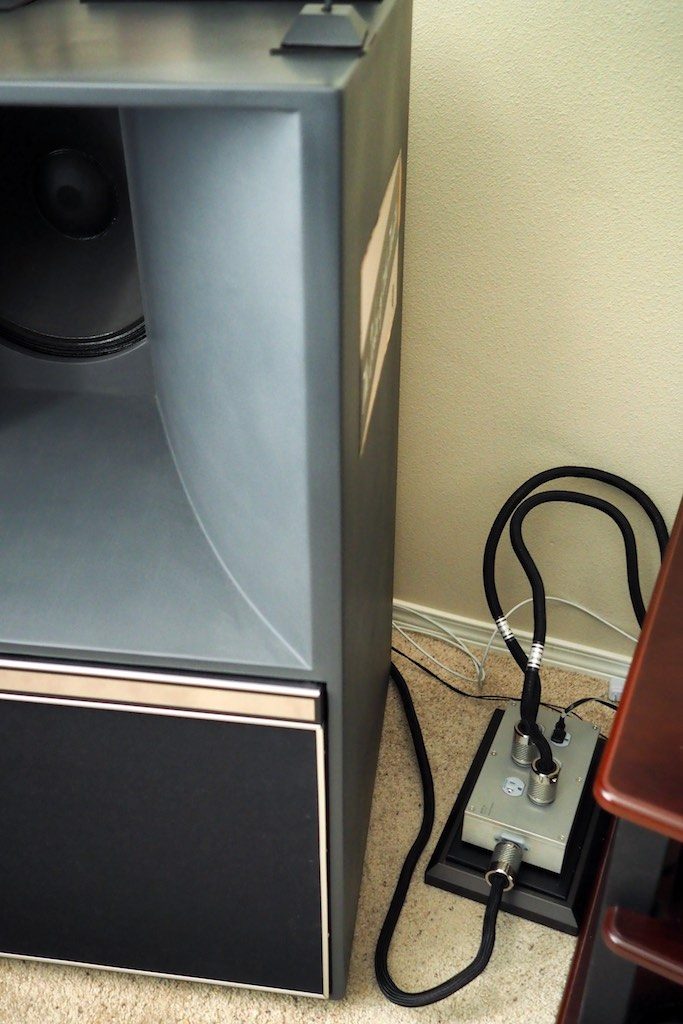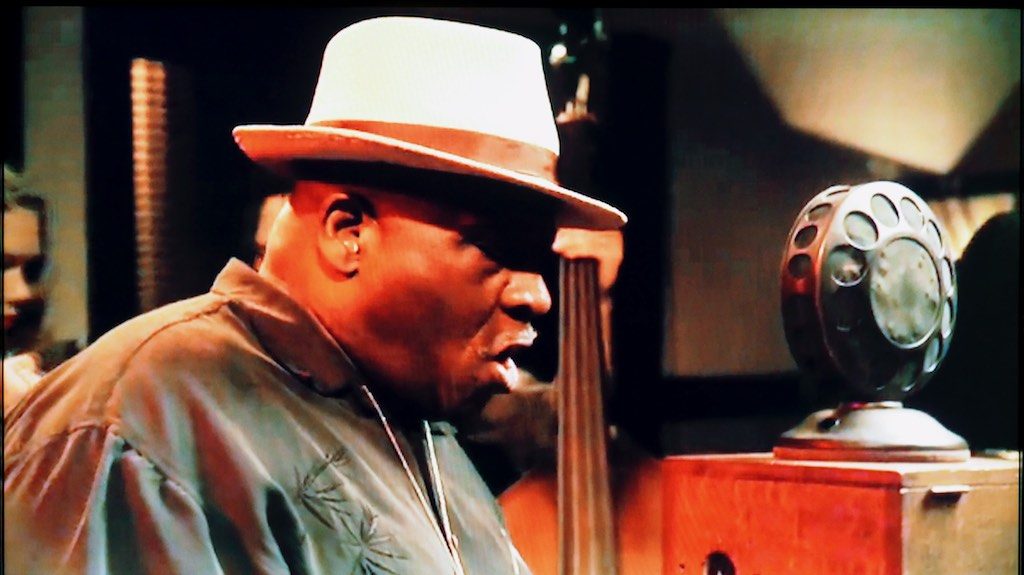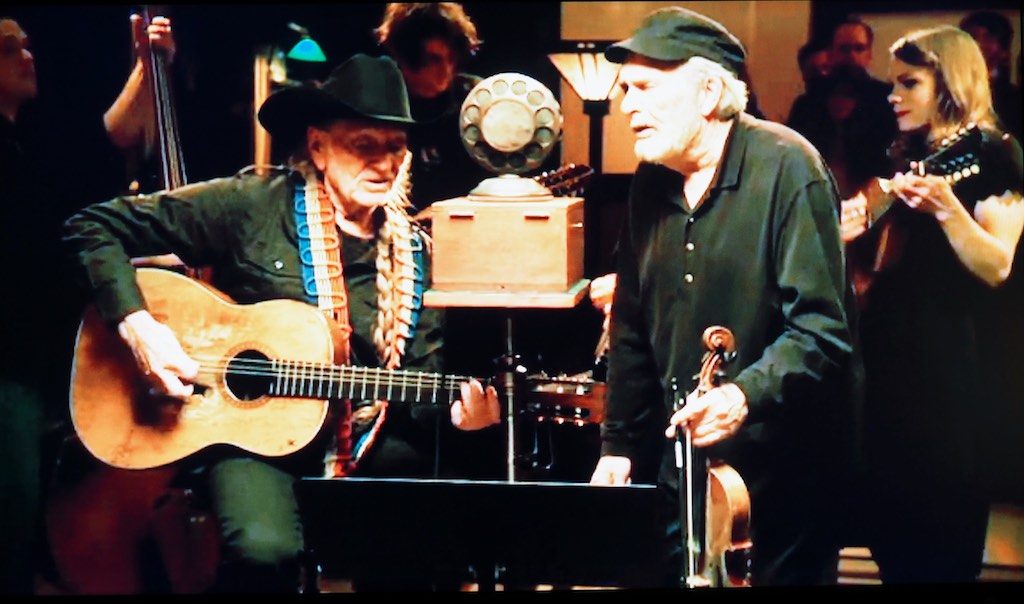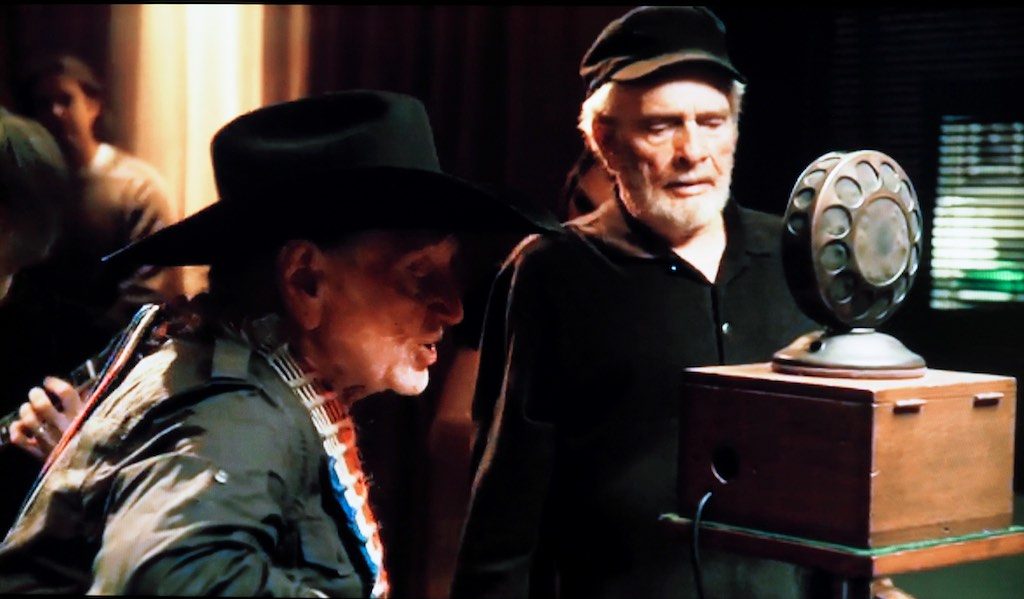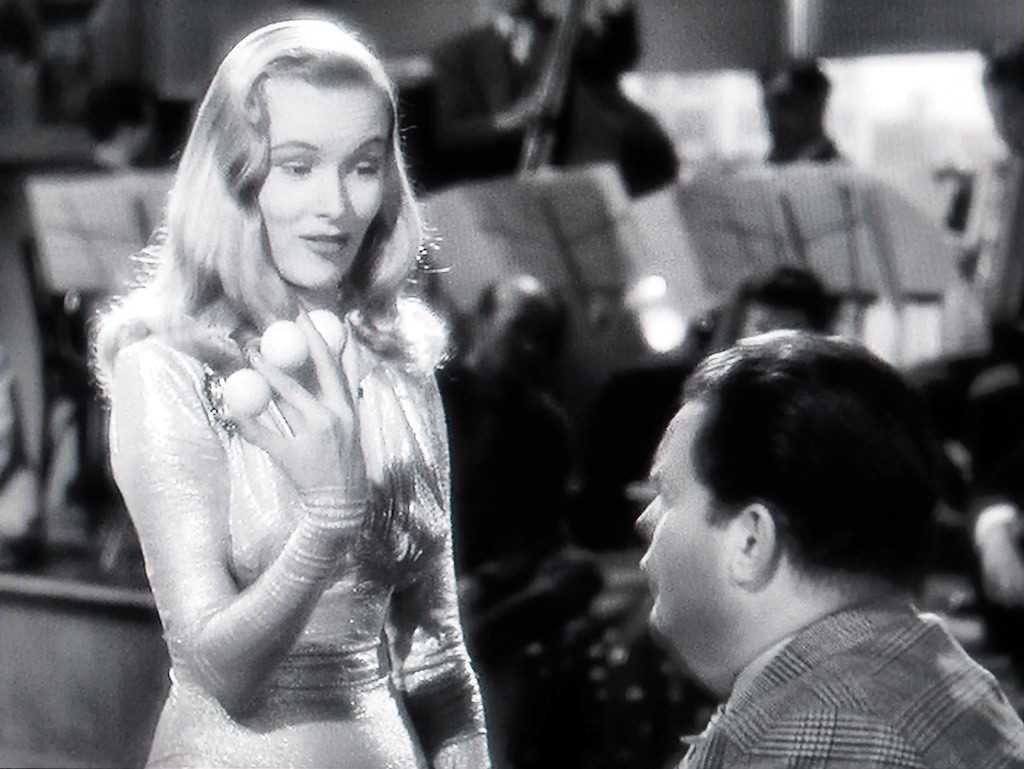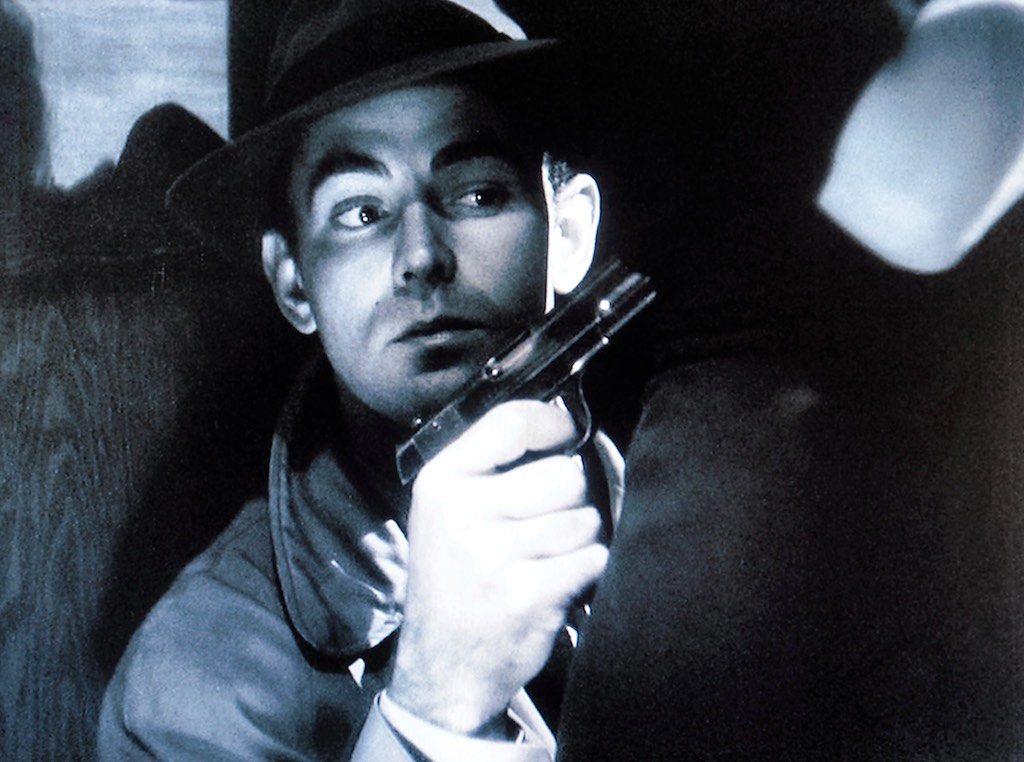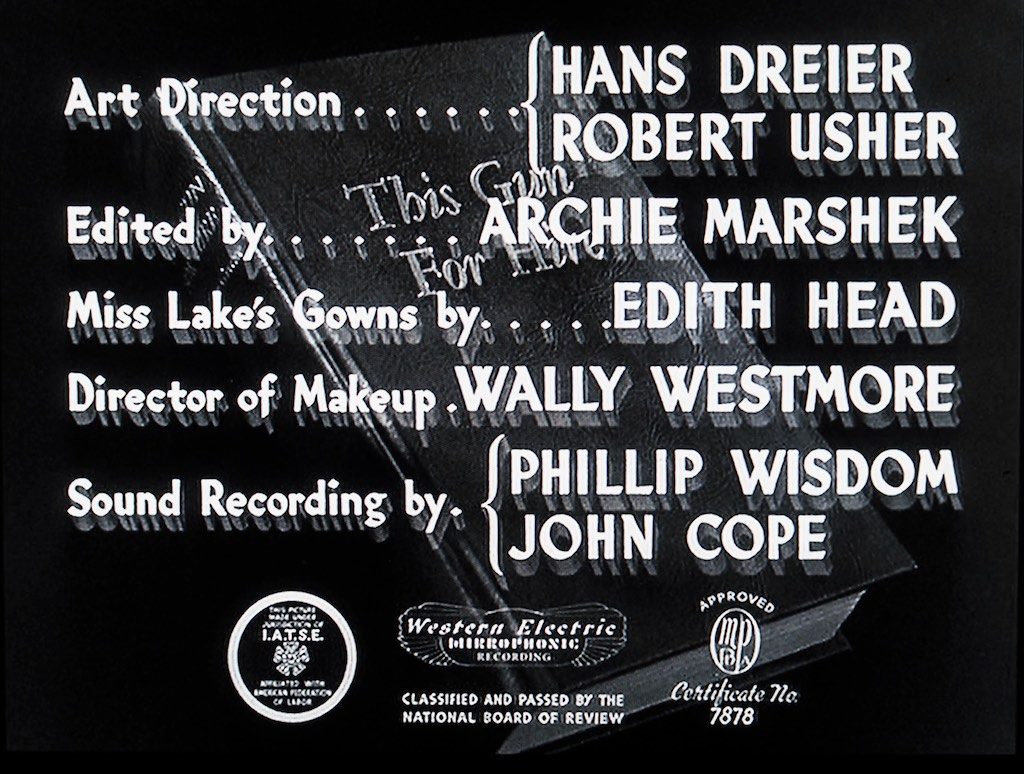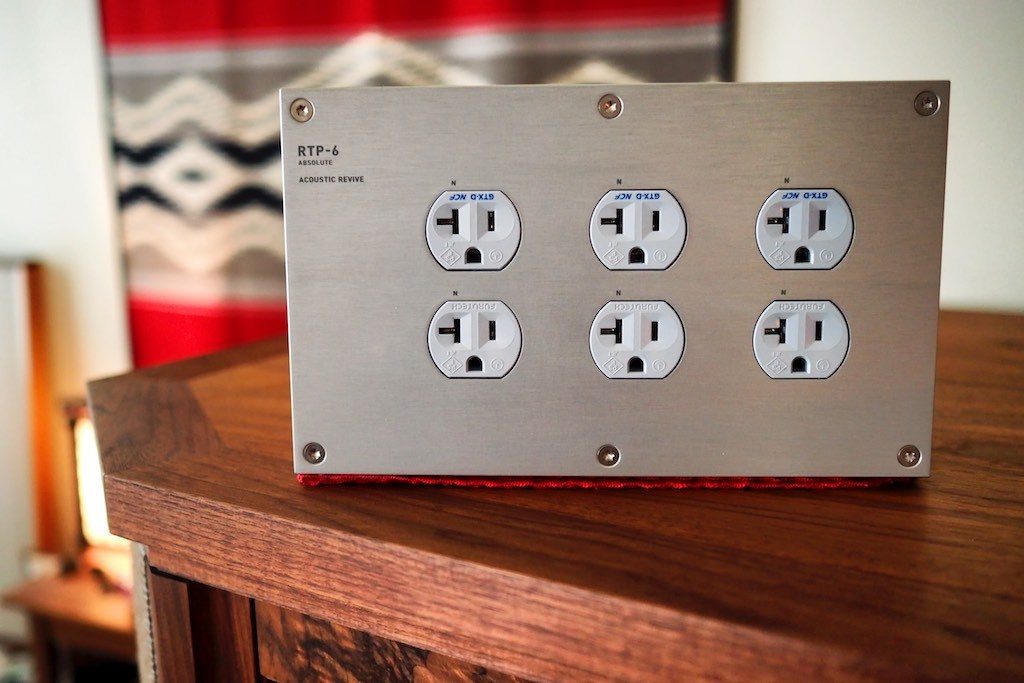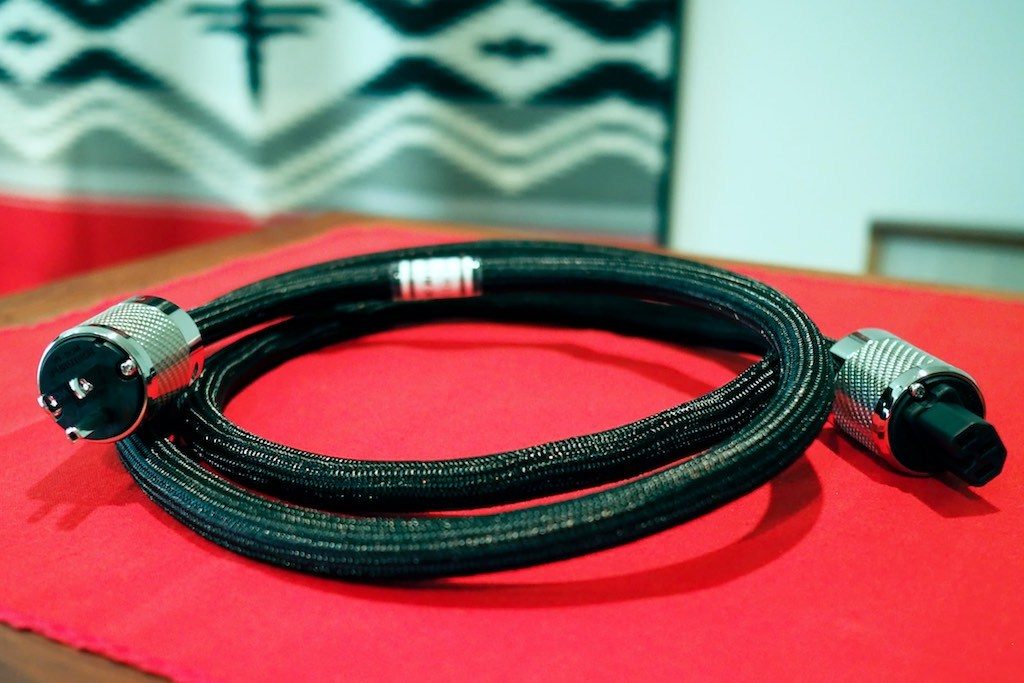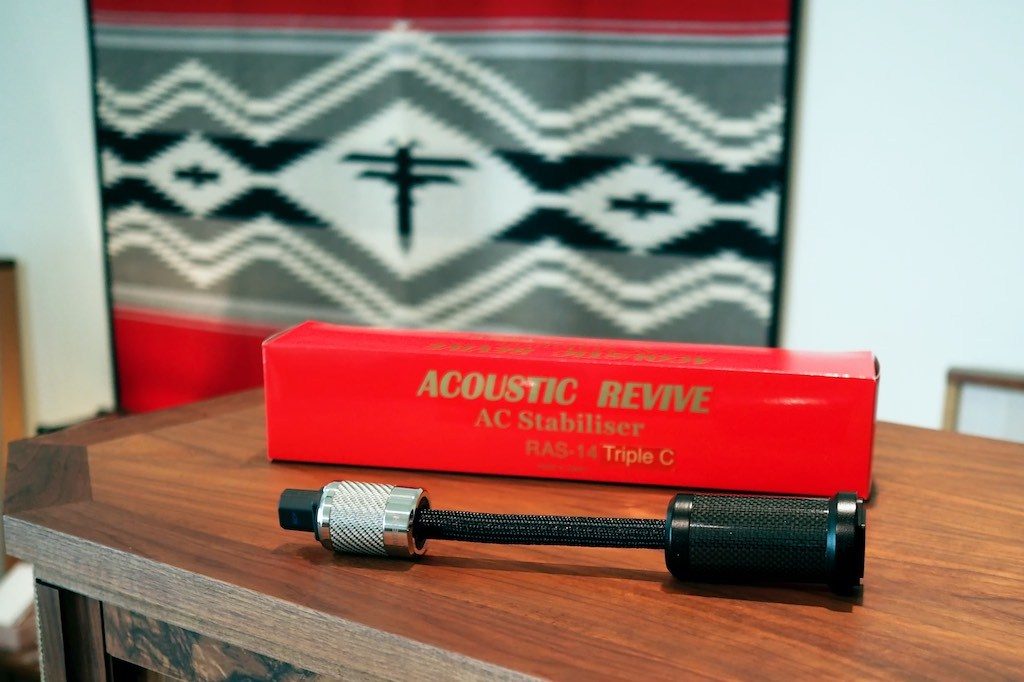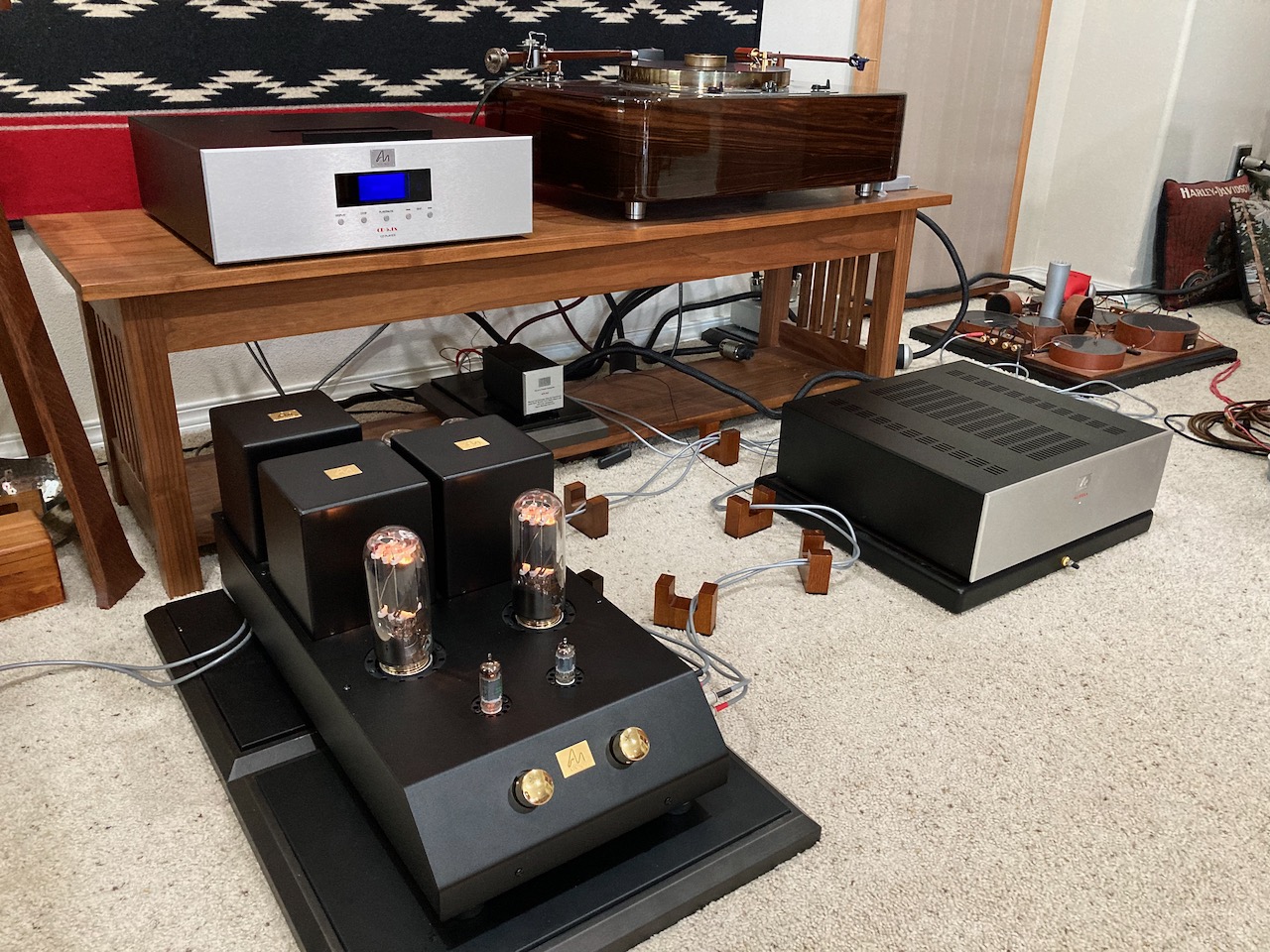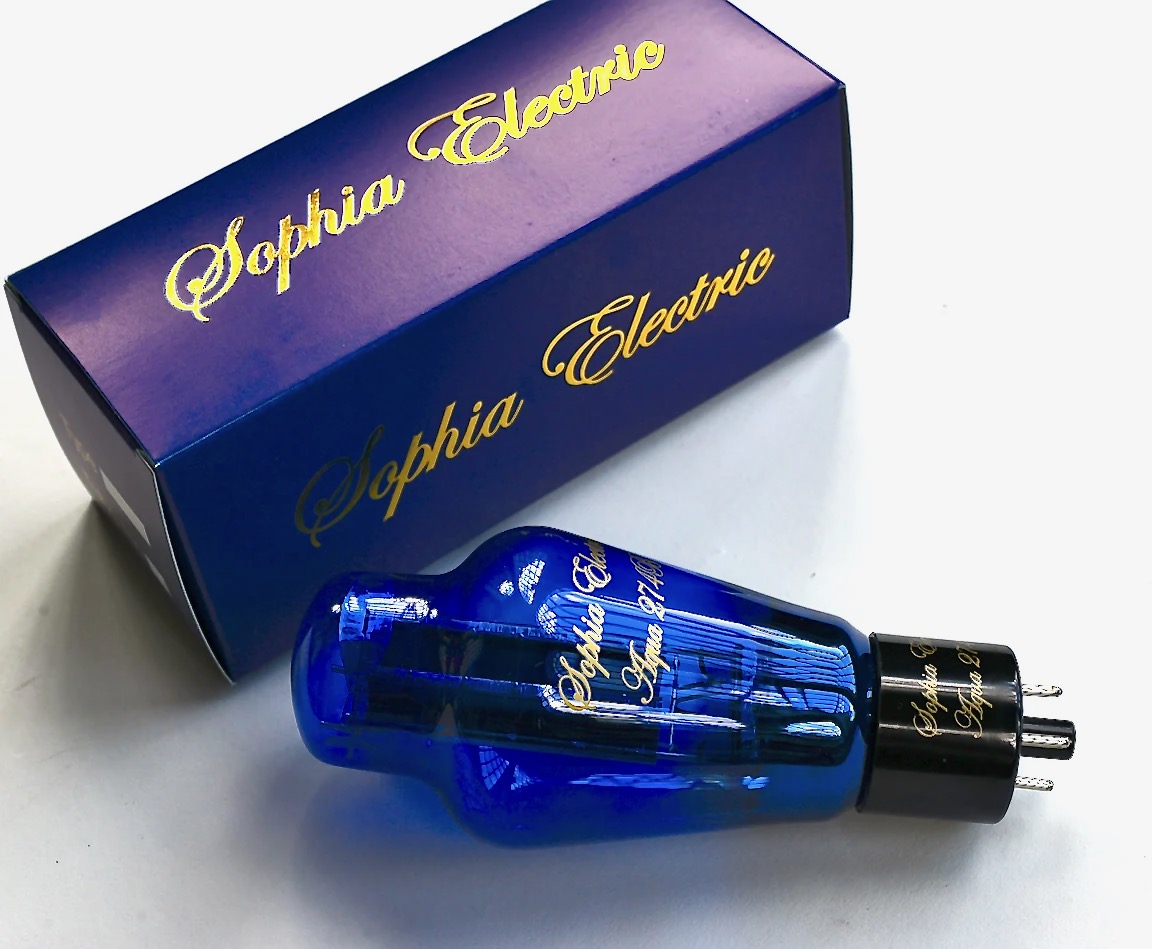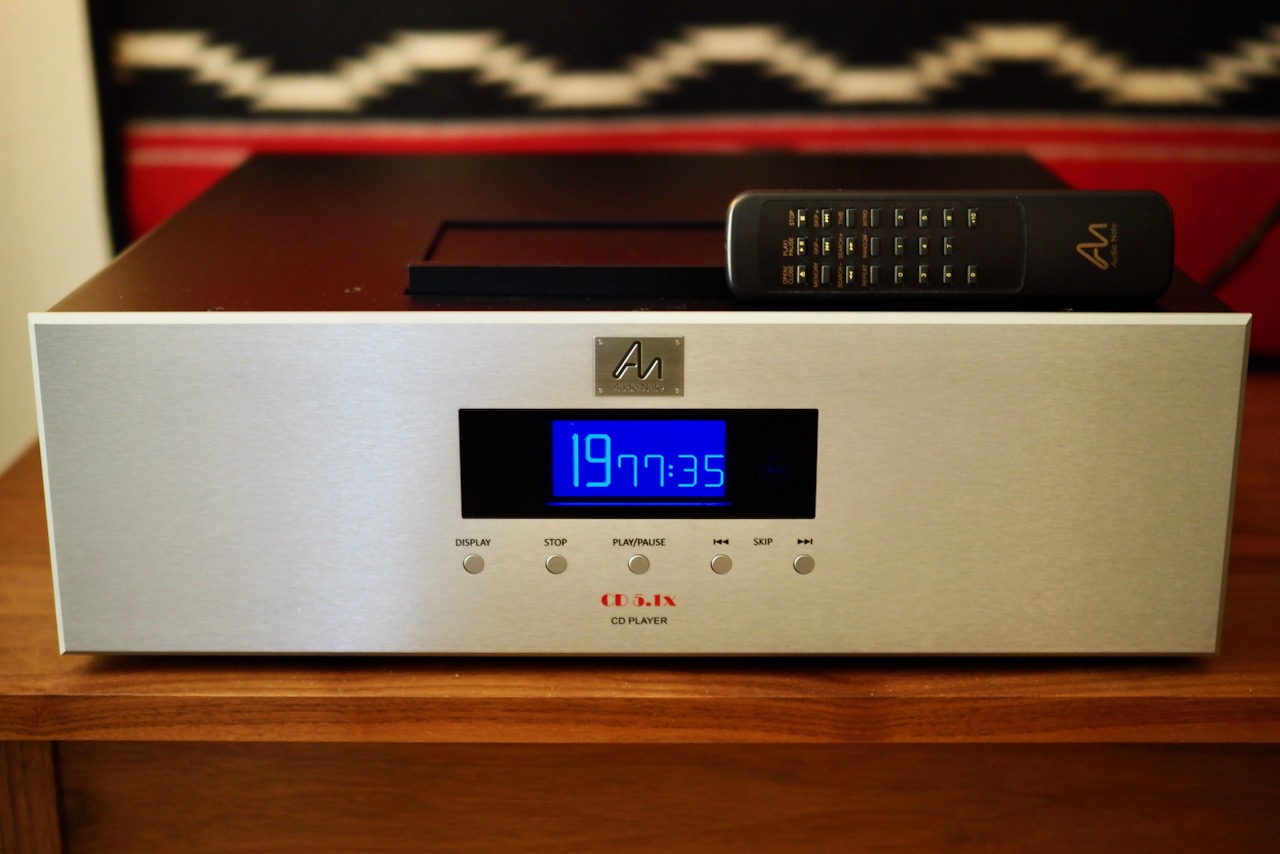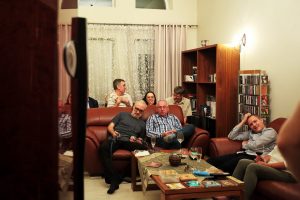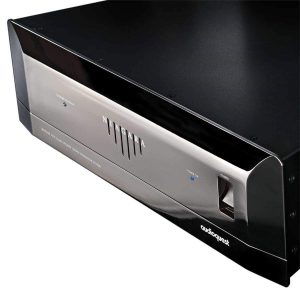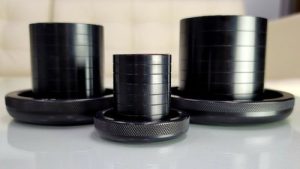Acoustic Revive was founded in Japan in 1997 by Mr. Ken Ishiguro, who is the design genius behind the innovative and ultra-quality Acoustic Revive products.
Like many hi-fi enthusiasts, Ken-san's interest in audio arose through his love for music as a youngster.
Ken-san told me, "I was listening to the Beatles when I was fourteen years old. It was 1976 and it was the 10th anniversary of the first arrival of the Beatles in Japan. There was a Beatles revival boom in Japan at the time and I was listening to their music using a boom box. But I wanted better sound quality and a better system. Audio was very popular in Japan in the seventies, with audio systems being sold even in department stores. After getting out school for the day, I would stop in audio shops and listen to the music. I couldn't afford to buy the high-end audio systems the shops had as a child so I bought something more modest. I started spending all of my part-time job and pocket money on analogue records and accessories to improve the sound quality of my system."
Ken-san told me that over the years his interest in music continued to grow, "I like to listen to all kinds of music from old historic to the latest popular music. I like all music from the different cultures around the world. I also go to concerts and listen to live music whenever I can. Lately I've been listening to a lot of 60's to 80's rock & roll. I think that rock music in that period had a lot of creative elements in the recordings that compare favorably to the creativity and artistry seen in the best classical and jazz. I personally think that if a system can play rock & roll superbly, then it can also reproduce any other genre of music well."
Ken-san has numerous home systems, and also owns a hi-fi retail audio store called PROGIC in Isesaki, in the Gunma Prefecture, where he can test Acoustic Revive products on a set of diverse audio & video systems to ensure they work well across a wide variety of equipment.
Ken-san said his original interest in audio accessories has blossomed over time: "I became very interested in audio accessories that improved the natural qualities of the music, and have been using them now for more than thirty years. I have tried all of the audio accessories I could find from around the world."
Ken-san wants to reproduce the sound from the recording media without adding any artifice, "so that it sounds natural and not as though it is being played back over an electrical device. Only by listening to natural sound without electronic artifice can you hear what the artists intended."
Ken-san's interest in audio accessories led him to start Acoustic Revive during a business downturn for the company he had become president of, Sekiguchi Machine Sales.
"Acoustic Revive is part of Sekiguchi Machine Sales, which used to design, manufacture and sell production machinery used to make concrete blocks for construction projects. However, in 1995 the Ministry of Constructions in Japan changed the construction laws and building projects using concrete blocks were outlawed. As you can imagine, our company was impacted severely by this change and we ended up having to dismiss all our employees. At the end, only the president and I were left. Unfortunately, he passed away from cancer, and I was left as the president of the company without a job to do or products to make. So, I took a chance and decided to sell the RD-1 demagnetizer I was making as a hobby. Luckily the RD-1 was a popular product and that's how I got started as an audio accessory manufacturer. Since 1997 I have been able to offer new products every year, and thankfully the Acoustic Revive products have been very well received."
Not only have Acoustic Revive products been very well received, but since their introduction in 1997, Acoustic Revive has received a significant amount of performance awards from around the world, somewhere around one-hundred and sixty-seven, if I remember correctly. That's a lot of awards!
I first became aware of Ken-san's Acoustic Revive products in 2007 when they were recommended to me by Yoshi Hontani (The MuSon Project, Osaka, Japan), who exports hi-fi exotica from the Leben Hi-Fi Stereo Company, the Spec Corporation, fo. Q, Audio Replas, KRYNA, SFORZAT, Murasakino Ltd, and of course, the subject of this article, Acoustic Revive.
From my first review of the Acoustic Revive RR-77 Schumann Ultra Low-Frequency Pulse Generator, back in February of 2008, I have continued to be very impressed with the Acoustic Revive products I have written about over the years, and now, nearly ten years later, with this article for Positive Feedback, it will be my fourteenth feature length article about Acoustic Revive products!
Here's the list of all my Acoustic Revive articles for your reference:
- Chapter 1 – The Acoustic Revive RR-77 Schumann Ultra Low-Frequency Pulse Generator – 6Moons, February 2008.
- Chapter 2 – The Acoustic Revive RIQ-5010 / RIQ-5010W Quartz Insulators; QR-8 Quartz Resonators – 6Moons, March 2008.
- Chapter 3 – The Acoustic Revive RCC-24 Ground Conditioner; SIP-8F RCA Input Shorting Plugs; QR-8 Quartz Resonators – 6Moons, May 2008.
- Chapter 4 – The Acoustic Revive RPT-2 & RPT-4 Ultimate Power Distributors, Power Reference AC Power Cords – PFO Issue 39.
- Chapter 5 – The Acoustic Revive REM-8 EMF Canceler – PFO Issue 40.
- Chapter 6 – The Acoustic Revive RWL-3 Acoustic Conditioner, CB-1DB Receptacle Base Plate, the CFRP-1F Carbon Fiber Outlet Plate, and the CS-F2 Outlet Stabilizer – PFO Issue 42.
- Chapter 6a – The Acoustic Revive RIO-5II Negative Ion Generator & RD-3 Disc Demagnetizer – PFO Issue 45.
- Chapter 7 – The Acoustic Revive Custom Series Loudspeaker Stands, the RST-38 & TB-38 Quartz Under-Boards, and the RAF-48 Air Floating Board – PFO Issue 47.
- Chapter 8 – The Acoustic Revive Single Core Speaker Cables, Single Core RCA Interconnects, and the RCI-3 Cable Insulators – PFO Issue 49.
- Chapter 9 – The Acoustic Revive RAS-14 AC Power Conditioner and the USB-1.0SP USB Interconnect – Issue 55 (May-June 2011).
- Chapter 10 – The Acoustic Revive RR-777 Schumann Pulse Generator, the RL-30 Mark III Analogue Disc Demagnetizer, the CB-1DB receptacle base plate, CFRP-1F carbon fiber outlet plate, and the Acoustic Revive modified Oyaide R-1 receptacle – Issue 68 (July-August 2013).
- Chapter 11 – The Acoustic Revive RR-888 Ultra Low-Frequency Pulse Generator, Single Core PC-TripleC, PCOCC-A, and Line-1.0RS RCA Interconnects, Oyaide R-0 AC outlet, and cruzeFIRST Audio Maestro AC outlet – Issue 76 (November-December 2014).
- Chapter 12 – Acoustic Revive RPC-1 Power Supply Conditioner – Issue 89 2017.
- Chapter 13 – The RPT-6 Absolute NCF Power Distributor, the Power Reference TripleC NCF AC Power Cord, and the RAS-14-TripleC NCF Power Stabilizer – this article!
I feel very fortunate to have been able to experience and write about Ken-san's Acoustic Revive products now for nearly ten years, and they have truly stood the test of time in my audio life.
I've always found Acoustic Revive products to make a meaningful—and sometimes startling—difference in my hi-fi systems' musical & sonic performance.
Acoustic Revive's quality is impeccable, their reliability is impressive, and I've never had even a single Acoustic Revive product malfunction, break, or wear out in that time period.
If you've looked closely at the photographs that accompany my reviews, you'll notice all kinds of Acoustic Revive products in the four hi-fi systems that I write about in the articles here at Positive Feedback, or at my blog, Jeff's Place.
When you write about hifi, over the years a lot of equipment comes and goes through your life, and very little of it stands the test of time to stay in place for the long term, and in my case, the Acoustic Revive products have been a notable exception to that rule.
After all these years I consider Ken-san's Acoustic Revive products to be like comfortable old friends, adding to my life in meaningful ways, so it is always interesting and intriguing when a potential new friend arrives at my door.
Acoustic Revive Products In For Review
In this article I will be discussing the RPT-6 Absolute NCF Power Distributor, the Power Reference TripleC NCF AC Power Cord, and the RAS-14-TripleC NCF Power Stabilizer that have arrived for review, and they are new products that are intended to take the design principles of the Acoustic Revive RPT Ultimate Power Distributors (previously reviewed HERE), Acoustic Revive Power Reference AC Power Cords (previously reviewed HERE), and the Acoustic Revive RAS-14 AC Power Conditioner (previously reviewed HERE) to their next evolutionary level of performance.
The RPT-6 Absolute NCF Power Distributor
The Acoustic Revive RPT-6 Absolute NCF is a passive power conditioner that allows up to six AC power cords to be plugged into it, which is enough to serve as a central point to coordinate all the AC power cords for my entire main music system.
Like all Acoustic Revive products, the RPT-6 Absolute is built to an extreme level of quality, and like all Mr. Ken Ishiguro's designs, the RPT-6 is incredibly innovative in the use of materials science & high-technology ideas to improve performance.
While the RPT-6 Absolute NCF Power Distributor is similar in concept to the RPT-2 and RPT-4 Ultimate Power Distributors that I have been using and enjoying now for quite a few years, it takes their design to the next level of performance with the GTX-D Nano Crystal Formula (NCF) AC outlets, an NCF AC inlet, and new 2.8 x 2.4 mm of PC-Triple C elliptical copper internal wiring insulated in a combination of silk and Teflon.
The RPT-6 Absolute's chassis is CNC machined from a single block of aircraft grade aluminum, and the assembled RPT-6 Absolute weighs in at substantial 9.3 pounds.
Each chassis is machined to have a maximum thickness of 25mm (approximately one inch) for vibration control and to screen out noise, thereby improving the signal-to-noise ratio. Acoustic Revive says their one-piece machined chassis works far better at controlling vibration than competing designs, with the result being better sound quality and less distortion. After the chassis and top plate are machined they are sandblasted and then finished with an attractive and durable finish called Snow White Alumite.
The finished chassis is then filled with a combination of green carborundum powder, tourmaline powder, and natural quartz powder. Green carborundum is a man-made compound of silicon and carbon that Acoustic Revive says absorbs "electromagnetic wave noise which is produced from receptacles and internal wiring. Green carborundum is the only electromagnetic wave absorbent material which improves sound quality and S/N ratio."
After treating the chassis interior with green carborundum, a mixture of tourmaline powder, quartz powder, and epoxy is applied to the interior of the chassis and left to cure for a week. Acoustic Revive says the piezoelectric mineral tourmaline reduces static electricity through the release of negative ions, and that the quartz powder "releases far infrared rays, which has a surface activation effect. This leads to very realistic sound filled with a feeling of throbbing pulse."
After the epoxy in the chassis has cured, height-adjustable rhodium-plated machined brass footers are attached to the bottom of the chassis. The footers are fitted with a pad of high-tech vibration control material sourced from specialty company fo.Q. The damping material from fo.Q converts vibrational energy to electric energy, which is then converted to heat energy.
Ken-san is a fun man, and he likes to write various fun symbols on the devices he sends me, and I always enjoy looking for them!
Sometimes they're written on the outside of components, and other times I've even found them written on the insides of the chassis of the Schumann generators Ken-san that has sent me. It's like a treasure hunt—what fun!
This time I found hexagram symbols subtly marked into the bottom of the footers fo.Q damping material. Some of you might know that a hexagram can symbolize the connection of the spiritual & physical worlds, and the symbols are Ken-san's way of wishing me good luck! Thank you, Mr. Ken, those are good vibrations!
Ok, now let's talk about the impressive GTX-D NCF specialty outlets used in the RPT-6 Absolute, which were a joint development between Furutech and Acoustic Revive.
The GTX-D NCF outlet's body material is made out of a specialty Nano Crystal Formula (NCF) that is a combination of a crystalline material incorporating nano-sized ceramic particles and carbon powder, which exhibits piezoelectric damping properties when exposed to mechanical stress, which in this case is provided by the vibration in mains electricity, which for example, is a 60Hz vibrational frequency in the USA.
The NCF's piezoelectric effect puts the mains AC vibration to work to generate negative ions that helps eliminate static, and it also dissipates AC mains vibrational energy by converting it into electrical energy, which is then converted to thermal energy in the far-infrared.
You might wonder why Furutech & Acoustic Revive are so interested in reducing vibrational energy in an outlet that they have gone to such an extreme measure as developing a high-tech solution involving piezoelectric nanomaterials for the body of an AC outlet.
Here's why: Signal-to-noise ratio. The vibration of the mains AC is transmitted by the AC line to the outlet, from the outlet to the plug on an AC power cord, down the power cord to the equipment where it vibrates the equipment's chassis, vacuum tubes, and other components that make up the audio electrical circuits, reducing the signal ratio of the music signal flowing through the hi-fi.
When we think about the deleterious effects of vibration we normally think about floor-borne & air-borne vibration, and compensate by putting our equipment on isolation platforms and stands.
Isolation of equipment from vibration does help, however, the vibrational energy transmitted to equipment by the AC line is often overlooked, but reducing it at the outlet is an easy way to improve the signal-to-noise ratio, thus Furutech's & Acoustic Revive's interest in it. Pretty clever idea, I'd say.
Go ahead and take a look at the Furutech website HERE to get an idea of what goes into the construction of a GTX-D NCF outlet, it is an impressive design.
In addition to the NCF outlet body, the Acoustic Revive version of the GTX-D NCF outlet uses cryogenically treated silver-plated pure-copper electrodes, that are rhodium-plated to protect the silver from being damaged by the metal blades of AC plugs, and to keep it from oxidizing.
The electrodes grip the male connector blades of the AC plug via a stainless-steel spring system that holds the AC plug firmly but won't damage the male connector blades or their plating.
The AC inlet (above) for the RPT-6 Absolute is also a custom Furutech item, with a cryogenically treated silver & rhodium plated pure-copper electrode, and a Nano Crystal Formula (NCF) body.
The internal wiring of the RPT-6 Absolute is an elliptical single wire of 2.8 x 2.4 mm of PC—Triple C insulated in a combination of silk and Teflon.
I have to admit, just holding the RPT-6 Absolute in my hands, feeling its CNC machined aircraft-grade aluminum chassis, seeing its rhodium-plated brass footers with fo.Q damping inserts and its customized Furutech Nano Crystal Formula (NCF) GTX-D outlets, knowing about its exotic internal fill of natural green carborundum, tourmaline, and quartz powder, and finally, the internal wiring of PC-TripleC, really impresses me.
The Acoustic Revive RPT-6 Absolute is a remarkably well thought out product, and is built to an incredible level of quality, befitting its lofty price of $3975 USD.
The Power Reference TripleC NCF AC Power Cords
The RPT-6 Absolute NCF is intended to be connected to the wall AC with Acoustic Revive's finest AC power cord, the Power Reference TripleC NCF, which Ken-san sent me so I could experience the full measure of RPT-6 Absolute NCF's performance.
Actually, Ken-san sent me two types of 2-meter Power Reference TripleC NCF AC power cords to try, the first is a three-core version that is intended to connect the RPT-6 Absolute to my wall outlet (which is a combination of a Oyaide R-0 outlet, Acoustic Revive CB-1DB Receptacle Base Plate, and Acoustic Revive CFRP-1F Carbon Fiber Outlet Plate—photo above).
The second style of 2-meter Power Reference TripleC NCF AC power cord is a two-core version (no Earth conductor) that is intended to connect from the RPT-6 Absolute NCF to the associated system equipment, which Ken-san thinks is the best sounding way to connect equipment (it is also exactly what I do with all my vintage McIntosh electronics, which because of their elderly nature, have period-normal 2-core hardwired AC power cords).
Given the vintage McIntosh electronics in my main music system have hardwired AC power cords, I'll be auditioning the 2-conductor version of the Power Reference TripleC NCF AC power cords in my video system, on my Leben RS100 line stage and OPPO UDP-203 Ultra HD Blu-ray Disc Player, via my Altec A5 Voice of the Theatre loudspeakers and vintage McIntosh MC225 stereo amplifier.
Let's start off with how a Power Reference TripleC NCF AC power cord is constructed.
The Power Reference TripleC NCF AC cords are terminated with the NCF(R) Piezo Ceramic Series of Furutech AC plugs, the FI-50M NCF(R) on the wall outlet end (above), and the FI-50 NCF(R) IEC plug for connecting to the RPT-6 Absolute (below).
I've never seen the Furutech Piezo Ceramic Series of AC plugs until now, and I have to say they're rather astonishing devices in and of themselves.
In the past I've used the Furutech FI-11M Gold series ($70 USD street price), and the Furutech FI-25 Gold series ($80 USD street price), with excellent results. The street price for the Furutech FI-50 series is approximately $385 USD!
So, what makes the top-of-the-line Furutech FI-50 NCF Rhodium plug so spendy compared to the others? (Here's a link to the Furutech data sheet for the FI-50 NCF(R) plugs).
Here's what Furutech says about the FI-50 NCF Rhodium series of plugs:
"Furutech's Pure Transmission FI-50 NCF Piezo Ceramic series connector bodies and housings feature several breakthrough construction techniques."
"A multilayer nonmagnetic stainless steel and silver-plated carbon fiber shell incorporates a special damping and insulating acetal copolymer. Furutech settled on stainless and silver-plated carbon fiber for the outer housing after extensive listening sessions with Japanese industry figures and audiophiles."
"The body of the connectors incorporates an "active" damping material: Nano Crystal² Formula—Nano Crystalline, Ceramic and Carbon Powder."
"Incorporated into select Furutech products, Nano Crystal² Formula (NCF) is comprised of a special crystalline material that has two "active" properties. First, it generates negative ions that eliminate static and secondly, it converts thermal energy into far-infrared. Furutech then combines this remarkable crystalline material with nano-sized ceramic particles and carbon powder for their additional "Piezo Effect" damping properties. The resulting Nano Crystal² Formula is the ultimate electrical and mechanical damping material—only found in Furutech products!"
"Nano Crystal² Formula eliminates static, "interconverts" thermal, mechanical and electrical energy and damps vibrations - all for the finest Furutech Pure Transmission signal imaginable."
Floating Magnetic Field Effects & Furutech Earth/Ground Jumper System
"How far will Furutech's engineers go in their attempts to reach Pure Transmission reference quality? Their concentrated examination of each and every element of signal transfer has resulted in another breakthrough technology, the Furutech Earth/Ground Jumper System. It eliminates EMI (Electromagnetic Interference) induced in metal parts like connector housing screws."
"Current flowing through the power connector creates a magnetic field, just as an insulated conductor creates both electromagnetic and electrostatic fields. Furutech engineers found this magnetic field induces current flow (and a small magnetic field) in the screws holding the connector together! These magnetic fields interfere with the larger magnetic field around the conductor and connector."
"Furutech's total attention to detail and elegant engineering neatly solves the problem. The Earth/Ground Jumper System connects the securing screws to a ground terminal within the plug completely eliminating the field disturbances they cause. The stray fields are grounded by a series of interlocking parts within the connector that attach to the ground conductor. The Jumper System is available in Furutech NEMA Power and IEC Connectors. The Earth/Ground Jumper System Carries US Patent No. 6,669,491″
Essentially, the Furutech FI-50 NCF Rhodium power plugs are mini-components all by themselves, and are intended to be the power plug equivalents of the Sirens of Greek mythology, power plugs that lure in audiophiles with their enchanting musical voices and shipwreck our perceptions of what a power plug can do. Beware, if you listen to their Siren song your fate may be sealed!
Just one look & touch of the Furutech FI-50 NCF Rhodium power plugs will make you believe it too, they're nice!
I also noticed that Ken-san put hand-written symbols of blessing & good wishes on all of the FI-50 NCF(R) plug ends, which I thought was a very nice personal touch!
Here's what Acoustic Revive says about the PC-Triple C conductors that connect the two Furutech FI-50 NCF Rhodium power plugs together:
The PC-Triple C Single Core Conductors
"A dream new conductor PC-Triple C by forging manufacturing method developed as the world's first audio conductor. Acoustic Revive will adopt this PC-Triple C for all cables in the future. PC-Triple C uses special OFC (oxygen free copper) which completely removes micron unit impurities in raw material, and arranges the direction of grain boundary in the direction of electric flow by forging manufacturing method which is Japanese craftsmanship. It is a revolutionary technology."
"In addition, small micro-voids, which could not be avoided even in PCOCC, which is a single crystal material, are eliminated by forging, and the conductor density has been improved to the limit."
"With high-density sound quality not experienced with other conductors, with ultra-wide range, natural & smooth tone color, and texture expression, energetic and full of dynamic feeling, all items have reached another level of quality. PC-Triple C is a conductor for sound of Japanese Patent No. 5871985."
"Most cables on the market use a stranded wire made by twisting thin wires together to form a conductor. However, twisted wires are subject to stray current from the "strand-jump" phenomenon from the electrical field which circulates around twisted wires. This stray current effect causes incidental sound, noise, distortion, and makes the sound less transparent. Acoustic Revive uses single-core conductors because there is no method other than using a single core conductor to get zero stray current."
The Insulating Material
"In the single core cable series, fluoro-resin, which is the material with the highest non-dielectric constant presently, is adopted as the insulating material."
"Most commercial cables use PVC or polyethylene (PE), which have a poor non-dielectric constant, and remarkably deteriorates the sound quality."
"Also, cables using Teflon, which has the same type of fluorine composition, are domestically priced more than 500,000¥, but Acoustic Revive adopts fluoro-resin insulation even for our entry-level cables, realizing high-cost performance in a less expensive cable."
Noise Reduction with Fine Met Beads
"Fine Met beads (Fine Met beads® is a registered product of Hitachi Metals) are newly installed on power cables to eliminate noise on transmission. Fine Met beads are a material for removing soft magnetic noise by boron, iron and silicon alloy, which is characterized by no sound quality side effects like ferrite core. Acoustic Revive has adopted Fine Met beads at the optimal size for various cable applications, and succeeded in eliminating normal noise and common mode noise without any negative side effects. Without any side effects, the S/N ratio dramatically improves, the music emerges from the silence, and you can experience the pleasure of a realistic super-stereoscopic sound image in a vast sound field."
Cable Structure
"The ideal cable is one that is not diminished by transmission loss or alteration. There are no cables that will improve sound quality, rather it is only by reducing transmission loss and transmission alteration that more of the original sound quality can come through."
"In order to eliminate transmission loss and transmission alteration, Acoustic Revive jointly developed with various specialized material manufacturers the ideal cable structure."
"In particular, we use a single core conductor of PC-Triple C in an elliptical shape, which excludes resonance inherent to a single wire, that is created for us by the world's best forging manufacturing method by FCM Co., Ltd."
"We jointly developed a flexible Teflon coated copper tube to use as a shield, which provides ease of handling with complete shielding characteristics. For inside the shield we collaborated with Eisai to develop a natural silk tube that we use to separate the conductors and suppress vibration by combining dissimilar materials."
"Finally, we jointly developed a new screw fastening method with Matsugane Co., Ltd., which eliminates the sound quality degradation of solder."
"With the Acoustic Revive Power Reference TripleC NFC we have created a completely handmade AC power cord of state-of-art materials for unparalleled musical luxury."
A 2-meter Acoustic Revive Power Reference TripleC NCF AC power cord is $5750 USD.
The RAS-14-TripleC NCF Power Stabilizer
I reviewed the original RAS-14 way back in Issue 55 of Positive Feedback, in Chapter 9 of The Acoustic Revive Chronicles (photo below).
The new Acoustic Revive RAS-14-TripleC NCF Power Conditioner is intended to be the ultimate evolution of the RAS-14 concept through the addition of the TripleC conductors and the NCF connectors.
The appearance of the Acoustic Revive RAS-14-TripleC NCF Power Conditioner (above) might take you a little bit by surprise, because it doesn't look like what one would expect from the usual boxy power conditioner.
Rather, it looks more like a fancy version of a very short Acoustic Revive Power Reference TripleC NCF AC power cord (below), but with a mysterious carbon fiber chamber surrounding part of its length.
It turns out that RAS-14 TripleC NCF AC power conditioner is really a hybrid device that melds the performance concepts of the RTP Absolute NCF power distributors (below), which use a combination of vibrational dissipation and passive AC filtration that is achieved through clever applications of materials science, and the Power Reference TripleC NCF AC power cables (above), which are ultra-performance AC power cables.
Like the Power Reference TripleC NCF AC power cables, the RAS-14 TripleC NCF AC power conditioner is constructed with materials that are picked 'by ear' to provide the best musical & sonic performance, and are hand-crafted in a very laborious process that is the signature of Acoustic Revive products.
The plug ends of the RAS-14 TripleC NCF power conditioner are the specialty Nano Crystal Formula (NCF) material developed by Furutech (above and below), which are also used in the plugs of the RTP Absolute NCF power distributors and the Power Reference TripleC NCF AC power cables, that I described above.
In summary, the NCF's piezoelectric effect puts the mains AC vibration to work to generate negative ions that helps eliminate static, and it also dissipates AC mains vibrational energy by converting it into electrical energy, which is then converted to thermal energy in the far-infrared.
The conductors used in the RAS-14 TripleC NCF are the PC-TripleC, the same as used in the Power Reference TripleC NCF AC power cables, which Acoustic Revive calls "a dream new conductor" and believes it is the best audio conductor in the world.
"A dream new conductor PC-Triple C by forging manufacturing method developed as the world's first audio conductor. Acoustic Revive will adopt this PC-Triple C for all cables in the future. PC-Triple C uses special OFC (oxygen free copper) which completely removes micron unit impurities in raw material, and arranges the direction of grain boundary in the direction of electric flow by forging manufacturing method which is Japanese craftsmanship. It is a revolutionary technology."
The RAS-14-TripleC NCF Power Stabilizer is $2025 USD.
Music Review System
I used my primary music system for this review, which at the moment consists of Tannoy Westminster Royal SE loudspeakers hot-rodded with custom Duelund CAST external crossovers, Duelund DCA series tinned-copper speaker cables (review to come), heavily hot-rodded vintage McIntosh MC30 monaural amplifiers, a lightly hot-rodded vintage McIntosh MX110Z tuner-preamplifier, with step-up transformers (SUT) from Intact Audio, Arai Lab (in for review), and Auditorium 23, all connected with various Duelund DCA tinned-copper or silver interconnects to the MX110Z.
My vinyl source is based on a highly hot-rodded Garrard 301 turntable by Classic Turntable Company, in a custom plinth by Artisan Fidelity, fitted with a bespoke Pete Riggle Audio Engineering 'Woody SPU' tonearm, and a Thomas Schick tonearm, using a variety of different phono cartridges depending on the moment in time.
Listening Impressions
Ok, now that I've told you about the ultra-quality and intriguing design features of the Acoustic Revive RPT-6 Absolute NCF Power Distributor, the Power Reference TripleC NCF AC Power Cord, and the RAS-14-TripleC NCF Power Stabilizer, I want share with you what it is like to use these products in my system on a daily basis.
I'll tell you about how they affect my home music systems' ability to realistically portray the fundamental aspects of live music like timbre, tone color, tempo, melody, harmony, rhythm, beat, dynamics, and loudness.
I'll also share my impressions of how they portray the non-musical artifacts of the recording process, like transparency, resolution, soundstage, soundspace, and imaging; and finally, I want to tell you how well I think they convey the overall artists' intent in delivering the emotional impact of the music.
The Acoustic Revive RPT-6 Absolute NCF Power Distributor
I really like the Acoustic Revive RPT-4 Ultimate Power Distributor, which I've been using for many years now.
The RPT-4 Ultimate Power Distributor has served as a handy central location to plug all my electronics into, and it has improved my system's sonics and musicality across the board.
I have the RPT-4 Ultimate Power Distributor connected to a wall outlet with an Acoustic Revive Power Reference AC power cord, both with many years of use on them.
I've installed an Acoustic Revive CB-1DB receptacle base plate, CFRP-1F carbon fiber outlet plate, and an Acoustic Revive modified Oyaide R-1 receptacle into the outlet I use to power my system, which makes for a very good sounding AC wall outlet, and provides a very solid & secure interface to plug the Power Reference AC power cord into.
Other than the color, the most obvious external difference between my RPT-4 Ultimate and the new RPT-6 Absolute NCF are the 6's two extra outlets (which are reserved for an upcoming vintage review that requires a couple of extra outlets!).
When I installed the new RPT-6 Absolute NCF into my system, it was readily apparent that the new NCF plugs, PC-Triple C wiring, and other refinements that Ken-san has implemented have made a significant improvement over my otherwise excellent RPT-4 Ultimate.
In honor of Ken-san and his fondness for rock & roll, and the Beatles, I thought I would use my favorite Beatles compilation album, a nice old original Parlophone version of Love Songs from the UK to start off my discussion of the RPT-6 Absolute NCF's performance.
Love Songs continues to delight and surprise me every time I listen to it, with its combination of great music and impressive sonics, that you wouldn't really expect from a vintage mass market LP.
I played Love Songs through the Murasakino Musique Analogue 'Sumile' MC phonograph cartridge that I have mounted on my Schick tonearm (above), using the Arai Labs MT-1 step-up transformer to complement the Sumile's ultra-low internal impedance of 1-Ohm (below left, reviews to come for both).
What I was hearing through my system on Love Songs was gorgeous tone, lots of tone color resolution, life-like dynamics, a vivid presence of instruments and vocals, oozing with realistic timbral textures, and an artful portrayal of beat, tempos, and melodies, which made for an intoxicatingly musical and emotionally engaging listening session.
On the Beatles Love Songs, with the RPT-6 Absolute NCF in the system, there was more resolution, more fine detail evident, a more spacious sense of space in the soundstage, and the imaging of instruments and vocals had more presence & body than with my RPT-4 Ultimate.
What particularly impressed me with the RPT-6 Absolute NCF, was the notable improvement to beat, tempos, and dynamics, which really made the music come alive.
I also noted a subtly more natural, warm, and rich presentation of the music with the RPT-6 Absolute NCF.
Musically and sonically, everything on Love Songs sounded more direct and 'real' in a very satisfying way with the RPT-6 Absolute NCF in my system, and from an experiential standpoint, it felt like there was a closer emotional connection to the music, making for a more exciting and engaging musical presentation.
I just can't seem to get enough of The Alternate Blues album lately, featuring Oscar Peterson (piano), Dizzy Gillespie (trumpet), Clark Terry (trumpet & flugelhorn), Freddie Hubbard (trumpet & flugelhorn), Joe Pass (guitar), Ray Brown (double bass), and Bobby Durham (drums).
With the RPT-6 Absolute NCF in my system, I noticed that the imaging improved in solidity, that the layering in the soundstage depth was more defined, and the quartet of trumpets were more vividly present, yet still sounding naturally breathy, realistically piquant, and with an articulate 'sense of touch'.
Ray Brown's double bass emerged from the mix better, with a more pronounced articulation of the bass notes in his walking bass line, with a more pronounced sense of beat as he walked through the scale notes in the chords, which really added to the sense of forward momentum in the music. If you want to hear some really artfully recorded bass playing, check out The Alternate Blues!
On side 2, Bobby Durham gets some nice drumming in, and in general, with the RPT-6 Absolute NCF, everyone's musical contribution to the whole becomes more apparent, even with the quartet of trumpets vying for attention, I still got a sense of the artfully interwoven piano playing of Oscar Peterson, Joe Pass' guitar playing, Bobby's drumming, and Ray's incredible bass playing. The RPT-6 Absolute NCF just helps unravel the music and make it seem more real than does my RPT-4 Ultimate, which is itself already very good in making the music come alive and seem more 'real'.
So the new NCF plugs, elliptical PC-Triple C wiring, and other tweaks (fo.Q) that Ken-san has implemented into the new RPT-6 Absolute NCF really do take it to another level in meaningful ways for music listening, and in terms of sonic prowess.
My RPT-4 Ultimate is very good, but the new RPT-6 Absolute NCF is better. I'm impressed.
Acoustic Revive Power Reference TripleC NCF AC Power Cord
Before I delve into the Acoustic Revive Power Reference TripleC NCF power cord and tell you about it, I've got an illustrative little story to share with you about the Acoustic Revive Power Reference AC power cord that I've been using for many years now.
Stephaen (6Moons) and Pete (Pete Riggle Audio Engineering) stopped by one morning for a little coffee and music listening. Stephaen brought along the Pass Labs' solid-state INT-30A integrated amplifier that he was writing an article about for 6Moons, back then.
The INT-30A was a 30-watt integrated based on the Pass Labs' XA30.5 stereo amplifier, and like all Pass products it was built to a very high level of quality.
Our initial impressions with the Pass INT-30A in my system were mixed, it sounded pleasant enough, but a little uninspired perhaps, and a little dry compared to my valve gear.
Just for kicks, I decided to swap out the stock Pass power cord for an Acoustic Revive Power Reference power cord, to see if that would help things along.
I don't think I've ever heard a more dramatic transformation of a component due to changing a power cord than I did with the Pass. The three of us were stunned. It was as if the heavens opened, the music was filled with life and color, and the sense of space and sound-staging opened up dramatically.
Everything got better to such a large extent that if I were a Pass owner I would consider the Acoustic Revive Power Reference power cord a mandatory addition, and I'd toss the stock Pass power cord.
The look on Pete's face said it all, as the sonic and musical transformation with the combination of the Pass and the Acoustic Revive Power Reference power cord was truly something to behold, and Pete remarked how dramatic the transformation was.
If you've never tried a really good power cord, you're in for a treat one of these days, because they can make a night & day difference in system performance.
As you would expect from the story above, my trusty Acoustic Revive Power Reference AC power cord sounds pretty great connecting my system to the wall AC, with both the RPT-4 Ultimate that I normally use, as well as the new RPT-6 Absolute NCF.
Now onto the Power Reference TripleC NCF AC power cord!
My listening impressions with the new Acoustic Revive Power Reference TripleC NCF AC power cord follow those of the RPT-6 Absolute NCF Power Distributor pretty closely, which I guess isn't too surprising, given Ken-san also hot-rodded the Power Reference with the new NCF plugs, the elliptical PC-Triple C wiring, and other tweaks.
As with the Power Reference AC power cord, I connected the new RPT-6 Absolute NCF Power Distributor to my AC outlet, with the new Power Reference TripleC NCF AC power cord.
The Norman Blake / Tut Taylor / Sam Bush / Butch Robins / Vassar Clements / David Holland / Jethro Burns bluegrass album (Flying Fish Records HDS 701) is one of my favorite bluegrass albums, and features a great lineup of musicians with superb music, and it's a great recording!
This record came out in 1975, and it's not particularly easy to come by anymore, but if you see a copy, grab it, you won't be sorry!
Besides being just great music to listen to (it's not like the more typical frenetic bluegrass style, but it's more like old-time Americana like you hear in the stellar American Epic Sessions), the variety of acoustic instruments involved makes it a great check for timbral realism and tone color resolution: Norman Blake (guitar, mando-cello, and vocals), Tut Taylor (dobro, mandolin), Sam Bush (mandolin, mandola), Butch Robins (banjo), Vassar Clements (violin), David Holland (bass), and Jethro Burns (mandolin, guitar).
Actually, this record sounds fantastically natural, with great timbral realism, tone color resolution, and overall musicality with my Power Reference AC power cord providing the juice, but with the new Power Reference TripleC NCF AC power cord replacing it there's a significant change in sonics & musicality.
First, with Power Reference TripleC NCF power cord, the sense of space opens up a lot, and this is a little strange, but for exactly the same volume, it sounds louder. Also, the resolution is better, so you get more timbral texture and more obvious tone color resolution.
There's more emphasis in the upper mid-range with the Power Reference TripleC NCF, where the regular Power Ref is more laid-back sounding, with less transparency.
David Holland's bass playing displays awesome beat, resolution of nuances, and tempo, and the Power Reference TripleC NCF really nails the timbral character of Holland's bass.
The Power Reference TripleC NCF power cord also sounds more energetic, with tempos, melodies, rhythms, and dynamics, being more obvious and exciting, and you get a better sense of interactions between musicians, which I think is more realistic for this music.
Chad Kassem (Acoustic Sounds) recommended Merle Haggard's Songs for the Mama That Tried album to me back in the circa 1987 timeframe. It's a jewel of an album, and my favorite Merle Haggard album.
Songs for the Mama That Tried was dedicated to Merle's Mom, Flossie, who was 79 when the album came out back in 1981, and features a collection of wonderful old country gospel songs that just melt my heart!
The musicians on the album are Merle Haggard (vocals, guitar), Roy Nichols (lead guitar), Ronnie Reno (rhythm guitar), Kemo Kemolian (fiddle, lead guitar), Norman Hamlet (steel guitar), Gordon Terry (fiddle), Dennis Hromek (bass), Mark Yeary (piano), Bill Adams (drums), Don Markham (saxophone, trumpet), and interestingly enough, both Merle's second wife, Bonnie Owens, and his third wife, Leona Williams, sing the background harmonies on the album.
This is an album with a talented group of musicians, beautiful arrangements of old county gospel songs, and the recording quality is superb.
This is another one of those hard to find albums because it didn't sell all that well, but it is worth seeking out, and if you ever run across one buy it without hesitation, you'll be thrilled with it!
The Power Reference TripleC NCF power cord really gets the best out of Songs for the Mama That Tried, and makes it sound spooky real, with a rich and vivid presence that is just spellbinding, and emotionally ravishing.
Merle's vocals sound better than I've ever heard them with the Power Reference TripleC NCF power cord providing the juice, being ravishingly rich, beautiful, and expressive in a way that I just can't quite find the words to describe.
I could go on and rave about this album, but suffice it to say that the Power Reference TripleC NCF power cord takes Songs for the Mama That Tried to a level of overall musicality & sonic perfection that simply blows my mind!
So, to sum up, with the addition of the Power Reference TripleC NCF AC power cord, there was more resolution, more fine detail, a more spacious soundstage, and more presence & body from images of instruments and vocals.
The Power Reference TripleC NCF's increased resolution, articulation of more fine detail, also provided an enhanced sense of tone color specificity (those alterations of a three-note triad you get by adding additional pitches, as with the major & minor 6ths, major & minor 7ths, dominant 7ths with flat or sharp fives or nines, major & minor & dominant 9ths, 11th, augmented 11th, 13th, etc.), that give life and meaning to the different styles of music and the emotional connections that go with them.
The Power Reference TripleC NCF AC power cord also improved the presentation of beat, tempos, and dynamics, and in particular I noticed there was more bass note resolution & articulation.
With the Power Reference TripleC NCF AC power cord the music also became more natural, warm, and rich sounding, and gave me a greater emotional connection to the music.
As with the RPT-6 Absolute NCF power distributor, the new NCF plugs, elliptical PC-Triple C wiring, and other improvements that Ken-san has incorporated into the Power Reference TripleC NCF AC power cord take it another level of musical & sonic performance that are meaningful for music listening.
The RAS-14 TripleC NCF Power Stabilizer
The appearance of the Acoustic Revive RAS-14-TripleC NCF Power Conditioner doesn't look like what you would expect from the usual boxy power conditioner, nor does it perform like one.
The idea of RAS-14 TripleC NCF Power Conditioner is to be like a compact combination of the RTP-6 Absolute NCF power distributor and the Power Reference TripleC NCF AC power cable, that you can add to a single existing cable to greatly enhance its performance.
I've already been using the new RAS-14 TripleC NCF Power Conditioner in my AV system, so I had a pretty good idea of what to expect from it compared to my original RAS-14 (i.e. it does all those same sorts of great things that I hear from the new RPT-6 Absolute NCF power distributor and the new Power Reference TripleC NCF AC power cord).
What I was really curious about was what would happen if I added it to my Power Reference AC power cord, would it transform it to the same level as the new Power Reference TripleC NCF AC power cord?
I swapped in the combination of the new RAS-14 TripleC NCF power conditioner and my Power Reference AC power cord to replace the new Power Reference TripleC NCF AC power cord.
On Songs for the Mama That Tried, the combination of the new RAS-14 TripleC NCF power conditioner and my Power Reference AC power cord wasn't at the level of the new Power Reference TripleC NCF AC power cord, which I suppose was a little too much to hope for.
While the combination sounded great it lacked the smooth transparency, fine detail resolution, richness, color, and warmth of the new Power Reference TripleC NCF AC power cord by itself.
I don't want to overstate that as a negative, though, as the combination of the new RAS-14 TripleC NCF power conditioner and my Power Reference AC power cord did sound better than my Power Reference AC power cord by itself.
So, the new RAS-14 TripleC NCF power conditioner is an improvement over my Power Reference AC power cord by itself, but it doesn't elevate it to the rather remarkable performance level of the new Power Reference TripleC NCF AC power cord.
The new RAS-14 TripleC NCF Power Conditioner & new Power Reference TripleC NCF AC Power Cords in my Audio-Visual System
I use my audio-visual system for watching movies and listening to digital music. Normally, my A-V system consists of my restored vintage Altec A5 Voice of the Theater loudspeakers, Duelund DCA16GA speaker cables, my vintage McIntosh MC225 stereo amplifier, with Belden 8402 microphone cable interconnects connecting it to my Leben RS-100U line preamplifier, with Duelund DCA16GA interconnects connecting it to my OPPO UDP-203 Ultra HD Blu-ray disc player. I also use my MacBook Pro to stream digital media to my aging Philips television.
However, for this review (and in preparation for a review to come) I used my restored vintage Altec A5 Voice of the Theater loudspeakers, Duelund DCA16GA speaker cables, my Leben CS-600 vacuum tube integrated amplifier (fitted with Sophia Electric EL34-ST vacuum tubes that are in for review), with Duelund DCA16GA interconnects connecting it to my OPPO UDP-203 Ultra HD Blu-ray disc player. The Leben CS-600 has Belden 8402 microphone cable interconnects connecting it to my Philips Television.
You might imagine that my restored 50-year-old vintage Altec A5 Voice of the Theatre loudspeakers, rescued from behind the screen of an old movie theatre, would make for compelling home loudspeakers for watching movies, and they do! They're actually pretty awesome for listening to music with as well!
Ken-san had recommended that I fit my entire music system with the new RPT-6 Absolute NCF power distributor, and a full suite of the new Power Reference TripleC NCF AC power cords, so I could experience the maximum effect of their performance improvement on my music system.
Ken-san sent me two types of 2-meter Power Reference TripleC NCF AC power cords to try, the first being a three-core (grounded) version that was intended to connect the RPT-6 Absolute NCF power distributor to my wall outlet, and 2 two-core (ungrounded) versions of the Power Reference TripleC NCF AC power cords to connect my components to the RPT-6 Absolute NCF power distributor, which he considered to be the highest performing way to connect everything.
However, there was a catch, as my nice old vintage McIntosh amplification in my main music system uses fixed power cords that can't be easily substituted, so I have split the review into two parts, the first being using the new RPT-6 Absolute NCF power distributor and the new three-core Power Reference TripleC NCF AC power cord in my main music system, as you have read above, and the second parting being outfitting my A-V system with the new RPT-6 Absolute NCF power distributor and full suite of the new Power Reference TripleC NCF AC power cords.
In my AV system, I used the three-core (grounded) Power Reference TripleC NCF AC power cord to connect the RPT-6 Absolute NCF power distributor to my wall outlet, and the two-core (ungrounded) versions of the Power Reference TripleC NCF AC power cords to connect my Leben CS-600 integrated amplifier and OPPO UDP-203 Ultra HD Blu-ray disc player to the RPT-6 Absolute NCF power distributor.
So first up I thought I'd watch the film, the American Epic Sessions, and if you have hadn't a chance to watch it yet, I recommend you do so at your earliest opportunity, it is beyond amazing!
The American Epic Sessions is a feature-length film produced by Jack White and T Bone Burnett (Robert Redford is also mentioned in the credits) about contemporary artists like Beck, Merle Haggard, Elton John, Los Lobos, Taj Mahal, Steve Martin (Yes, that Steve Martin!), Willie Nelson, Blind Boy Paxton, Raphael Saadiq, Jack White, and many others, being recorded on restored vintage Western Electric microphones, amplifiers, and other equipment, direct to wax disk. It is the first time that anyone has been recorded on the old Western Electric recording gear in over 80 years!
You can learn more about the American Epic Sessions on their website, on PBS HERE, and at least for the moment, you can stream the entire film on PBS Here.
I was so blown away by the American Epic Sessions that I had tears running down my face through half of the film, and I immediately ordered the Blu-ray disc of it from Amazon!
It is my hope that the American Epic Sessions will be released on vinyl at some point, as it would be an important contribution to any music lover's vinyl collection!
Ok, I got a little bit excited there talking about the American Epic Sessions, so back to the story line.
First, I watched the American Epic Sessions with my usual high-quality power cords in place, connected to the Belkin surge protector I normally use in my A-V system, the results of which you just read.
Then I swapped out my usual power cords and the Belkin for the Acoustic Revive RPT-6 Absolute NCF power distributor and the Power Reference TripleC NCF AC power cords, and watched the American Epic Sessions again (believe me, you'll want to watch it more than once too!).
The transformation in the sound quality of my system on the American Epic Sessions was dramatic, even greater in magnitude than what I experienced when listening to music in my main music system.
Clearly, Ken-san was exactly right about the fitting the entire system with the new RPT-6 Absolute NCF power distributor and the new Power Reference TripleC NCF AC power cords, it was a dramatic performance improvement musically & sonically for my A-V system.
The Acoustic Revive RPT-6 Absolute NCF power distributor and Power Reference TripleC NCF AC power cords really helped my audio-visual system in terms of being able to realistically portray fundamental aspects of live music like timbre, tone color, tempo, melody, harmony, rhythm, beat, dynamics, and loudness, about which I'll talk a little more about how important that is in the following summary & conclusions section.
How the Acoustic Revive RPT-6 Absolute NCF power distributor and Power Reference TripleC NCF AC power cords affect performance of the non-musical artifacts of the recording process in films (i.e. transparency, resolution, soundstage, soundspace, and imaging) is perhaps even more startling than it is with audio, as it really brings film foley effects to life in gripping fashion (foley are the sound effects that are added to films that make them seem more real & dramatic, they can be everyday sounds of traffic or phones, or the scary slam of a door, or just about anything!).
I've been watching some classic film noir lately, and there's just something about those old Hollywood crime dramas from the 1940's and 1950's that fascinates and entertains me.
Classic film noir's like This Gun For Hire, The Glass Key, Double Indemnity, Phantom Lady, The Blue Dahlia, Black angel, The Killers, The Big Clock, Criss Cross, Touch Of Evil, and others, are a truly unique film genre.
There's some great Hollywood actors & actresses in those films too, like Fred MacMurray, Barbara Stanwyck, Charlton Heston, Janet Leigh, Orson Wells, Veronica Lake, Burt Lancaster, Ava Gardner, and others, and needless to say, their acting was superb back in those early days of film, when they couldn't count on special effects or other trickery to carry the film.
You might also notice in the credits (below) of those vintage noir films, that they were recorded and recorded on vintage Western Electric equipment, not too dissimilar from what was used (in part) in the American Epic Sessions (which I can't wait to watch on Blu-ray!).
I haven't mentioned this yet, but adding a Power Reference TripleC NCF AC power cord to my OPPO UDP-203 Ultra HD Blu-ray disc player, and having everything plugged into the Acoustic Revive RPT-6 Absolute NCF power distributor, and connected the wall AC with a Power Reference TripleC NCF power cord, significantly improved the video quality of these old movies as well.
That makes sense when I think about it, as the wall AC eventually becomes the audio and video signals after passing through all the electronics, so anything that is done to lower the noise and vibration levels is also going to offer improvements both aurally and visually.
Given the improvement in resolution, clarity, contrast of black & white tones of these old noir films, and the increased three-dimensionality of the films' images even on my elderly Philips television, I can only imagine what the improvement might be like with the new high-resolution televisions.
Summary & Conclusions
This is my fourteenth article about Acoustic Revive products, and Mr. Ken Ishiguro still has the ability to surprise me with the quality, creativity, and sheer performance improvements that his designs offer.
If you've never had the opportunity to experience how quality AC products like the RPT-6 Absolute NCF Power Distributor ($3975 USD), the Power Reference TripleC NCF AC Power Cords ($5750 USD for a 2-meter power cord), and the RAS-14-TripleC NCF Power Stabilizer ($2025 USD), can improve the quality of your systems' audio and video performance, you're in for quite a treat one of these days!
Ken-san puts a lot of creative thought into his designs to lower noise and vibrational energy in the AC transmission, which becomes the all-important audio and video signals, as it passes into your electronics, and it just plain works, improving both my home music and video systems in significant ways.
These Acoustic Revive products really improve the abilities of my home music and film systems to realistically portray the fundamental aspects of live music like timbre, tone color, tempo, melody, harmony, rhythm, beat, dynamics, and loudness, as well as the non-musical artifacts of the recording process, like transparency, resolution, soundstage, soundspace, and imaging; and finally, in delivering the artists' intent in the emotional impact of the music or film.
I should also mention the significantly improved the video quality I experienced as well, and it turns out that anything that is done to lower the noise and vibration levels for realistic music reproduction, also improves the video quality as well.
I saw improvements in resolution, clarity, contrast of black & white tones of the old noir films I watched, and an increased sense of three-dimensionality of the films' sets and images, even on my elderly Philips television, so I can only imagine the improvement these Acoustic Revive products would make with the new high-resolution televisions.
I would like to thank Mr. Ken Ishiguro (Acoustic Revive) and Mr. Yoshi Hontani (The MuSon Project) for the opportunity to experience and write about these fine Acoustic Revive products—thank you!
As always, I would like to thank all of you for taking time to stop by and read my article, and may the tone be with you!
Contact Information
In North America, Acoustic Revive products are available from Mr. Joe Cohen of The Lotus Group.
In other parts of the world, please contact Mr. Yoshi Hontani directly for information about availability of Acoustic Revive products in your country.




